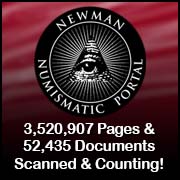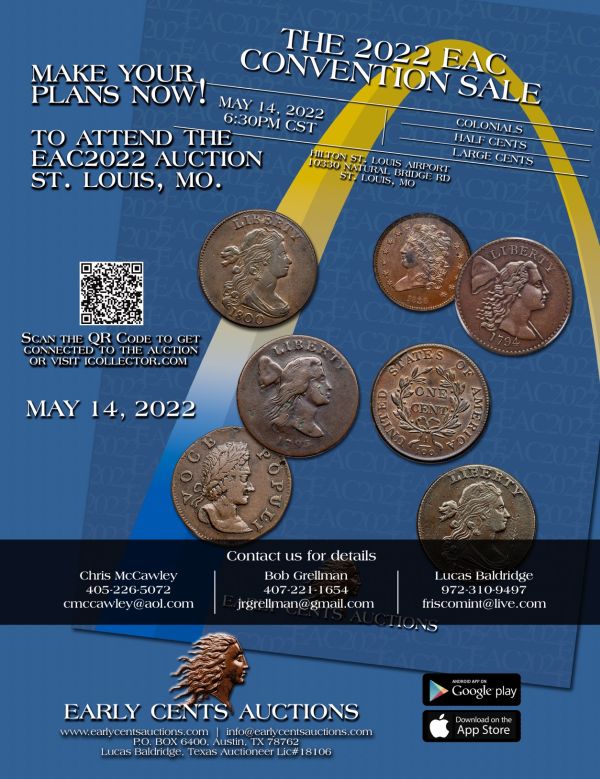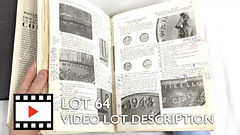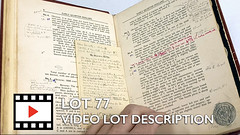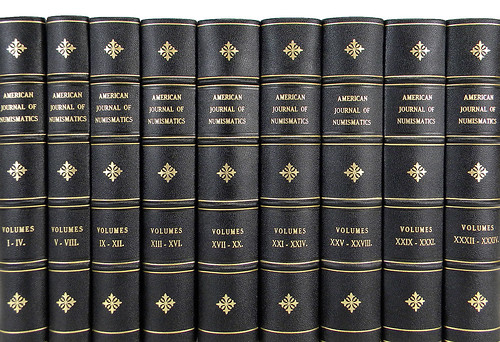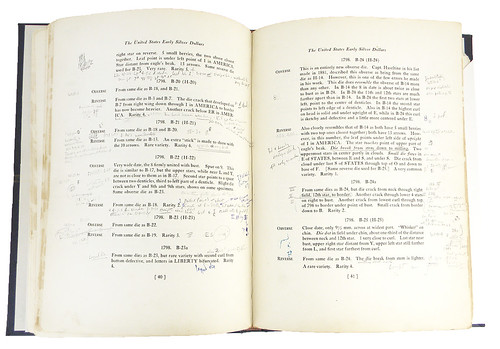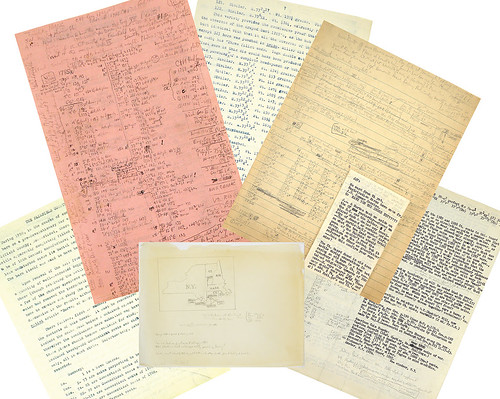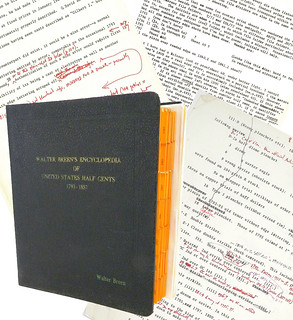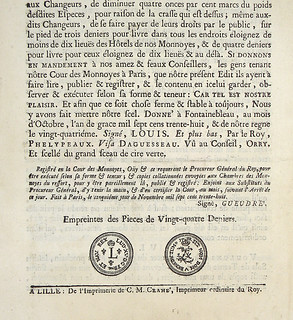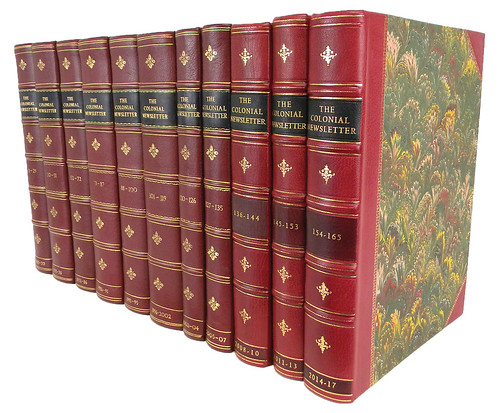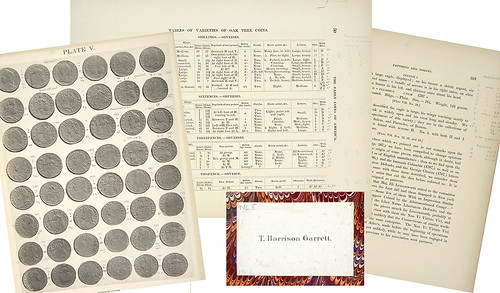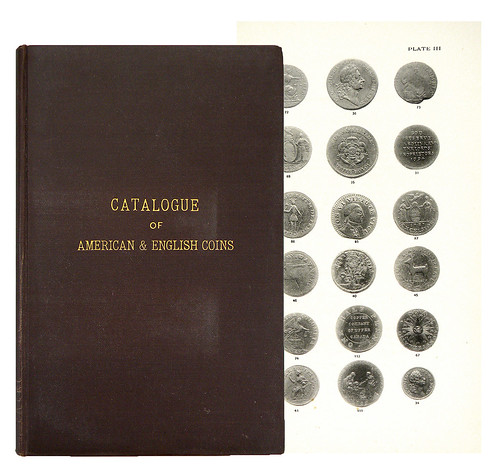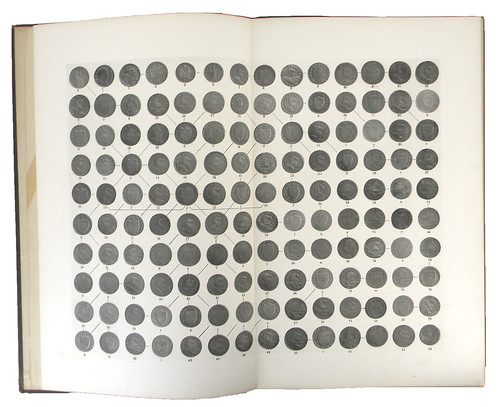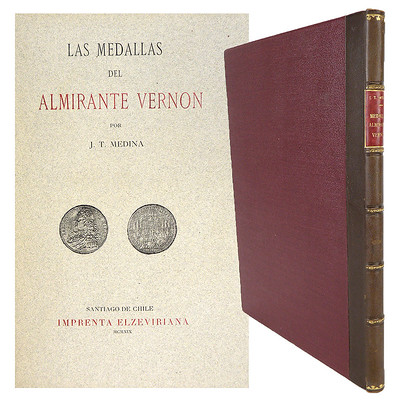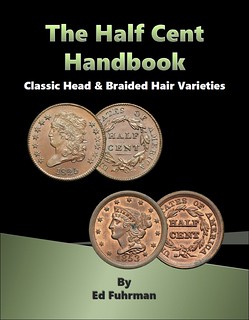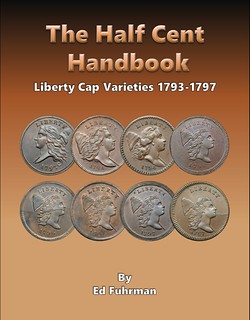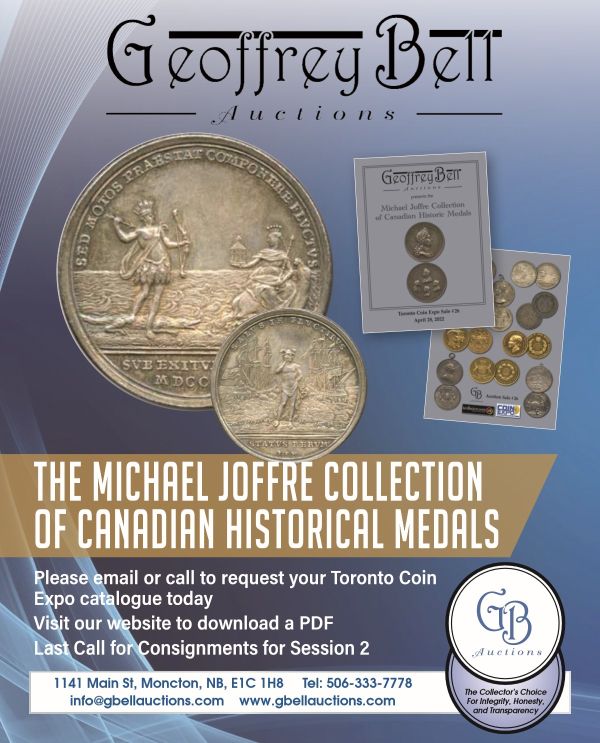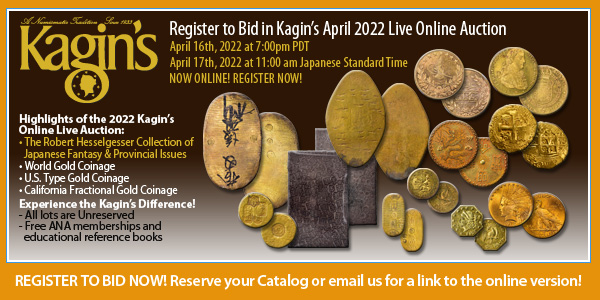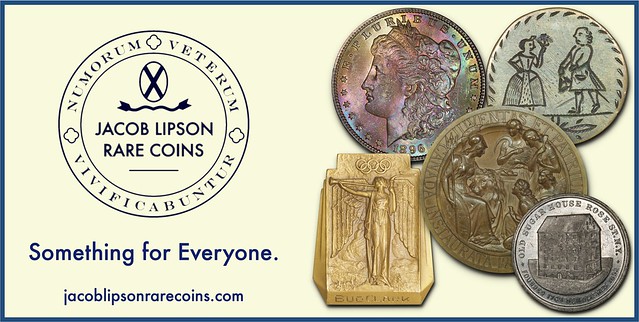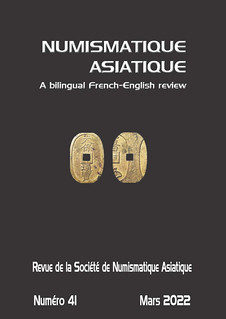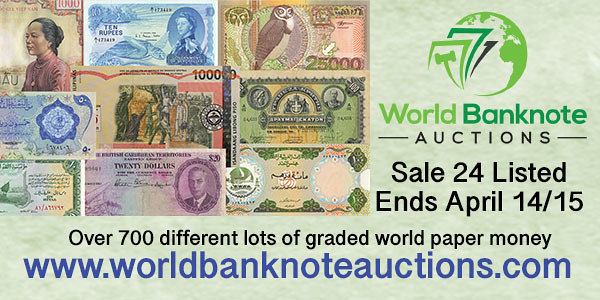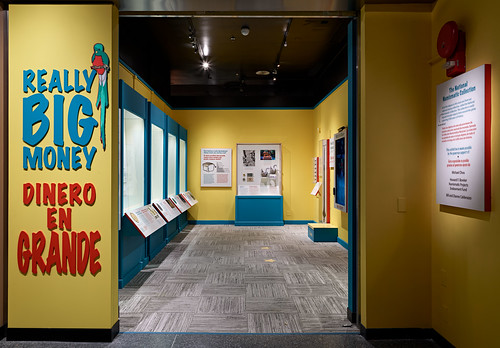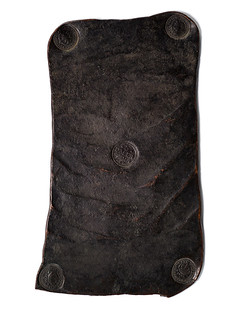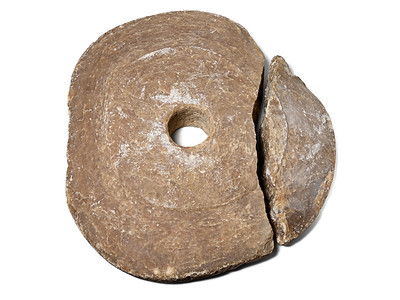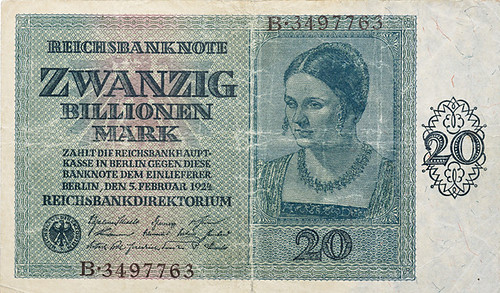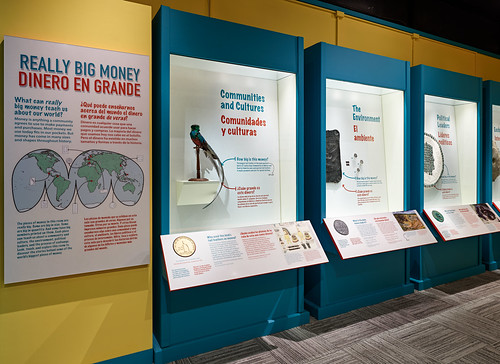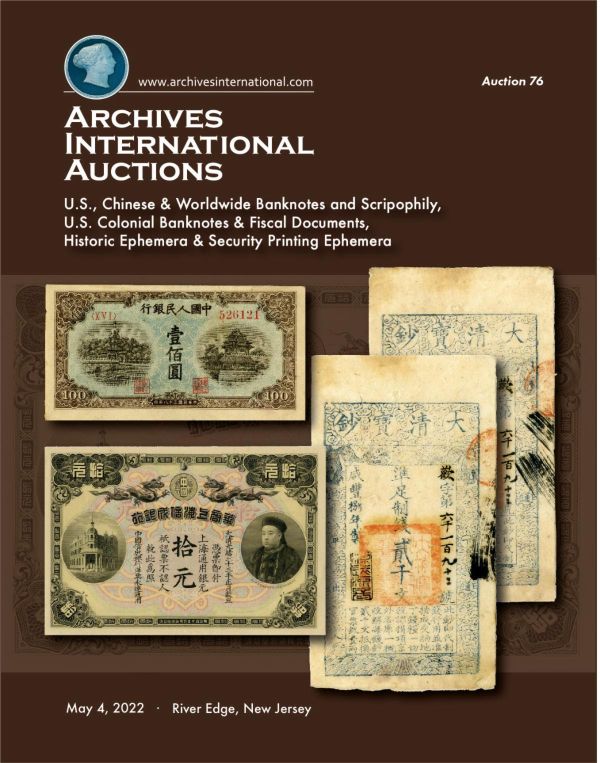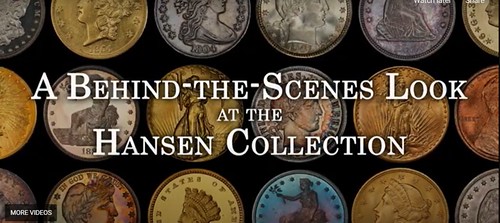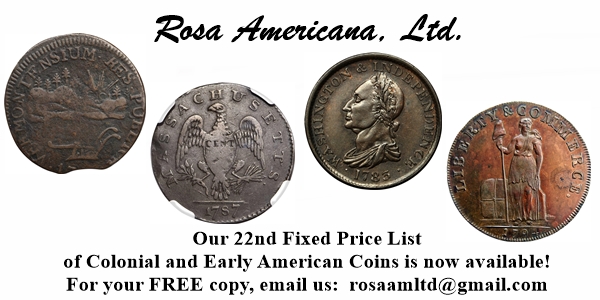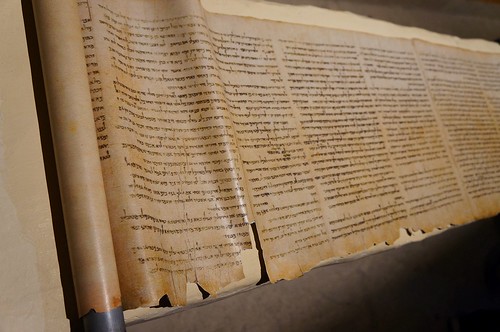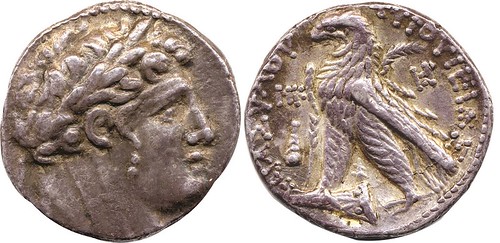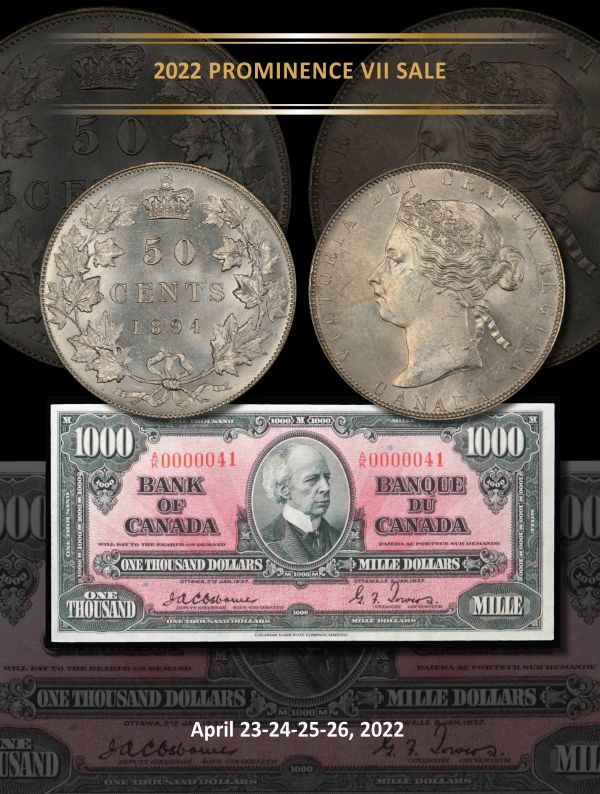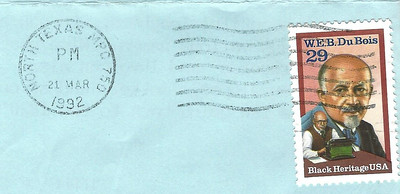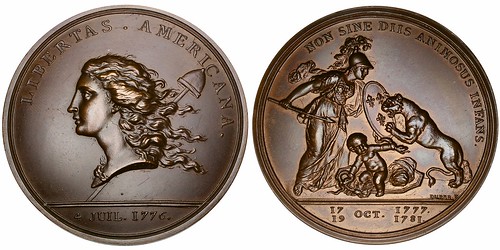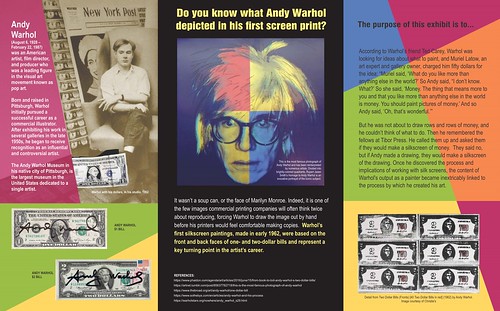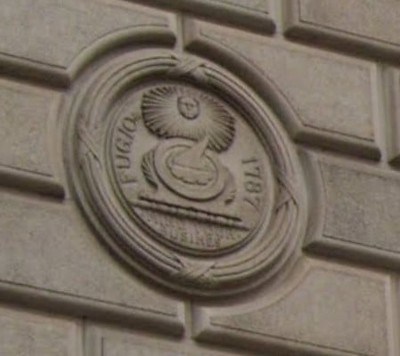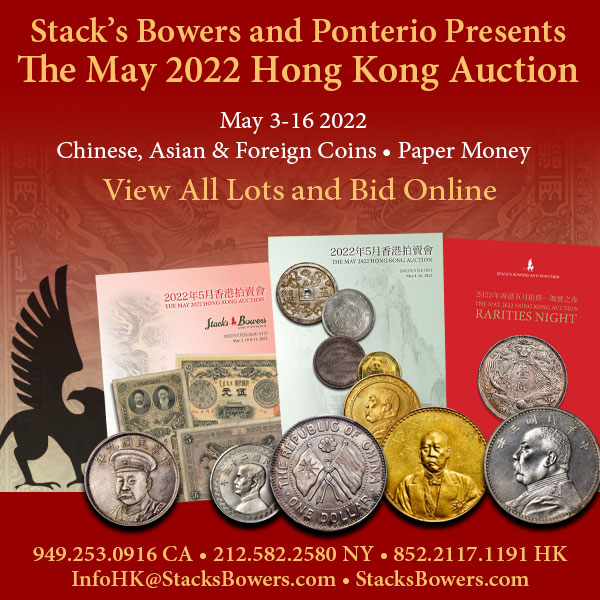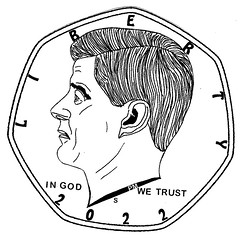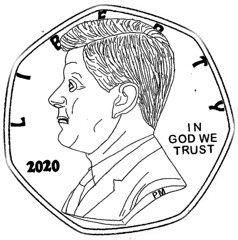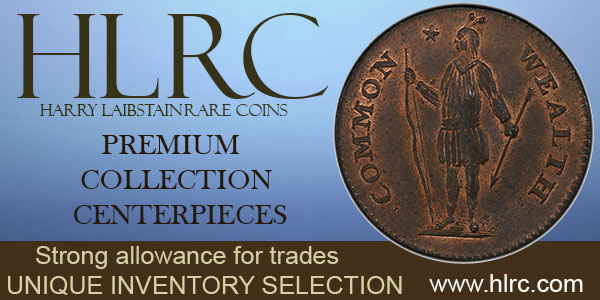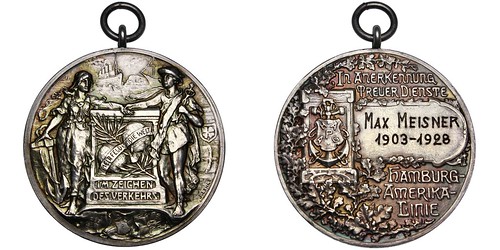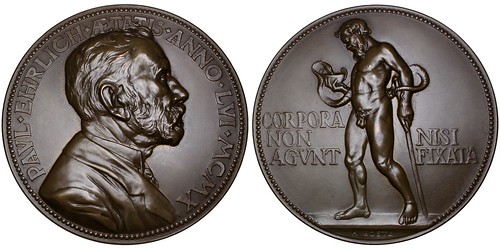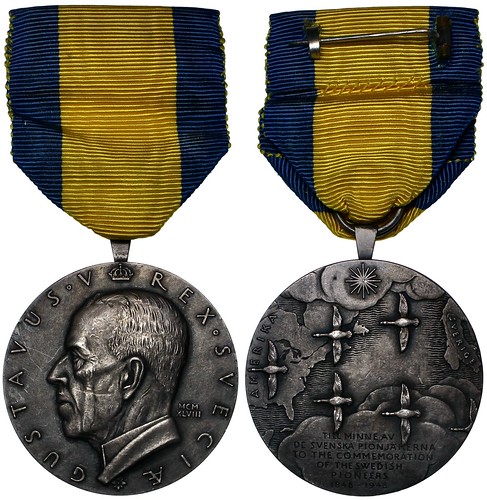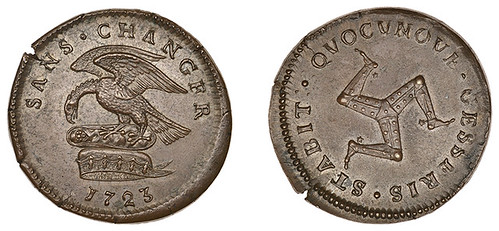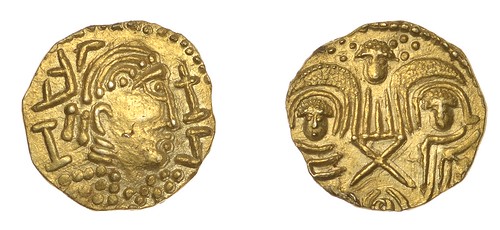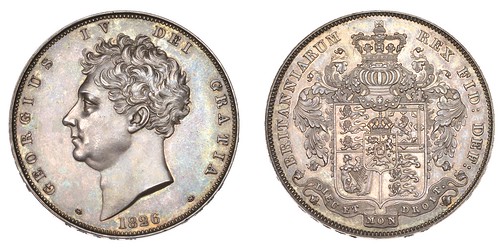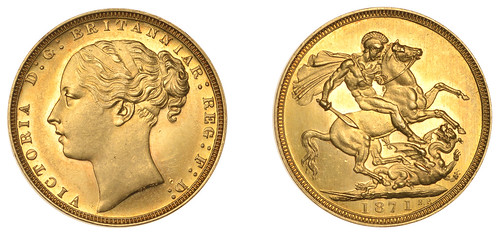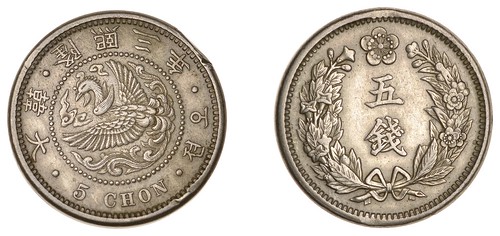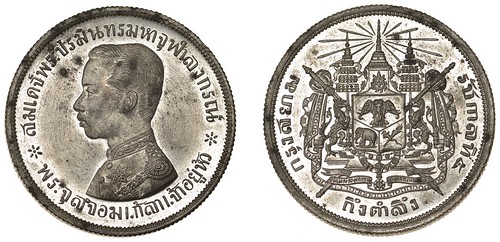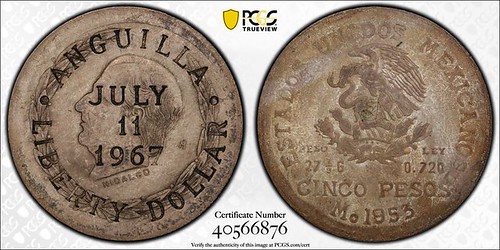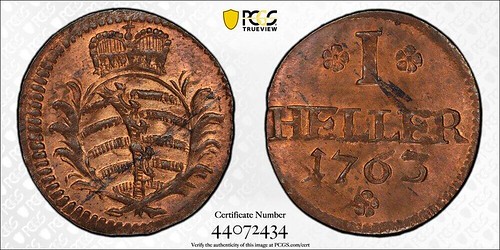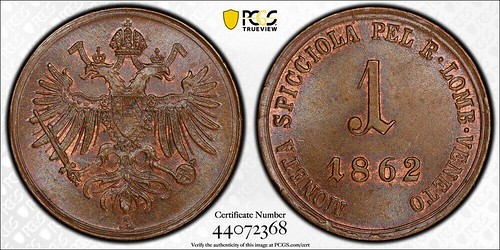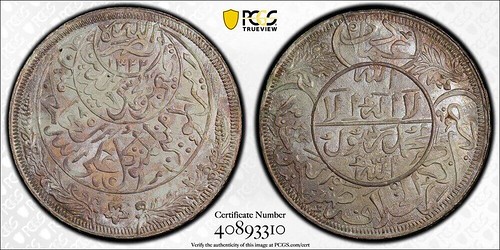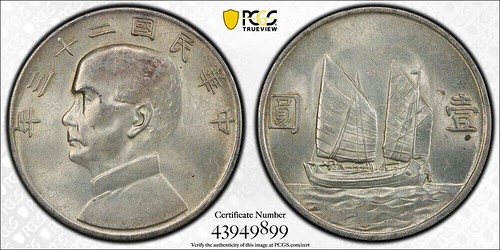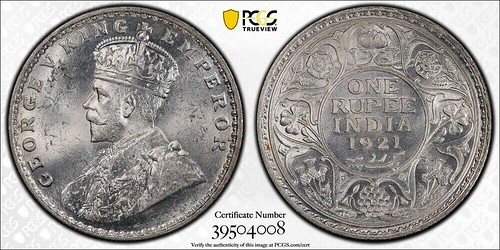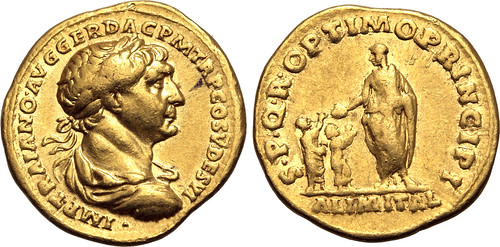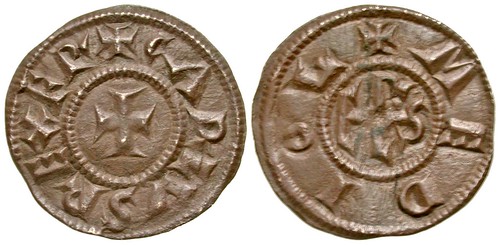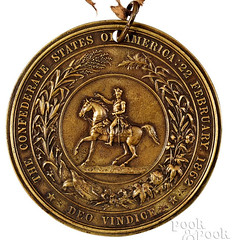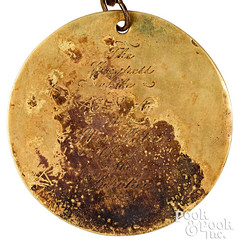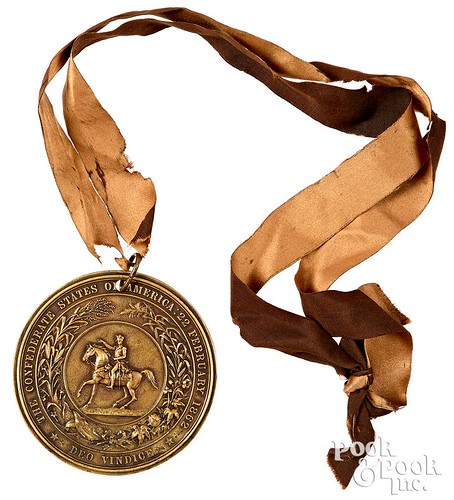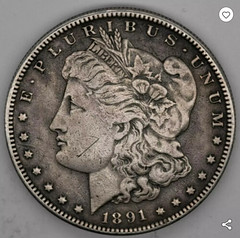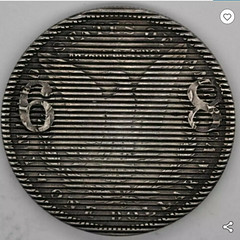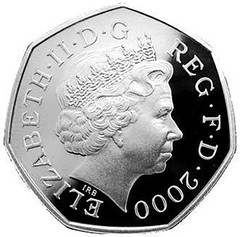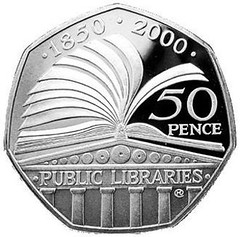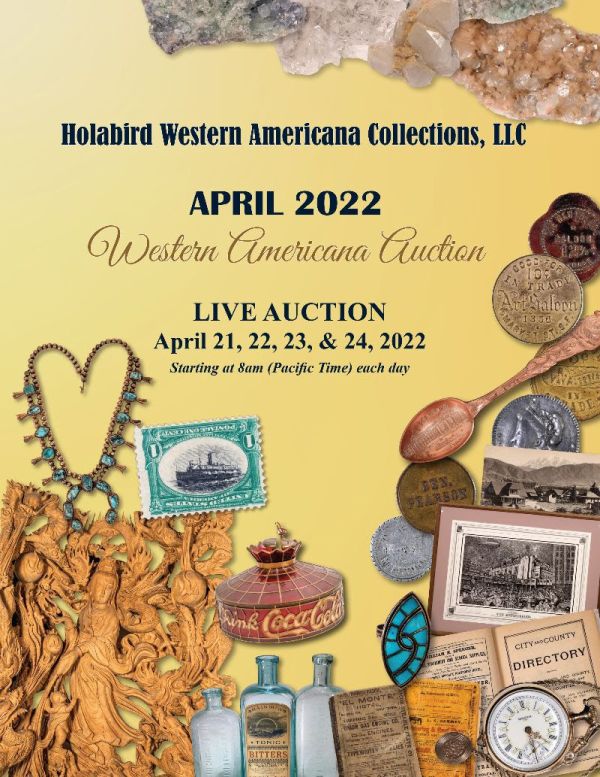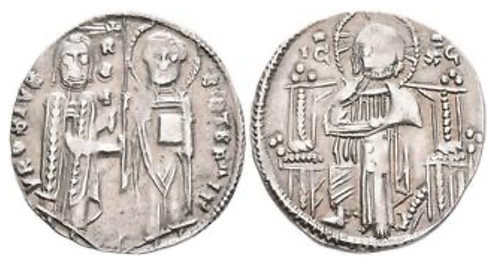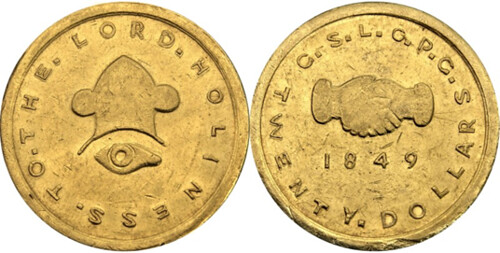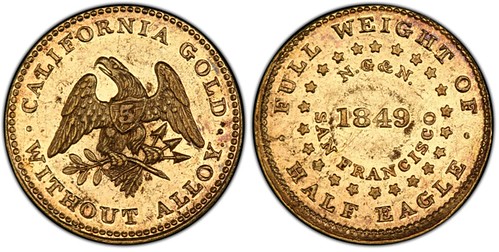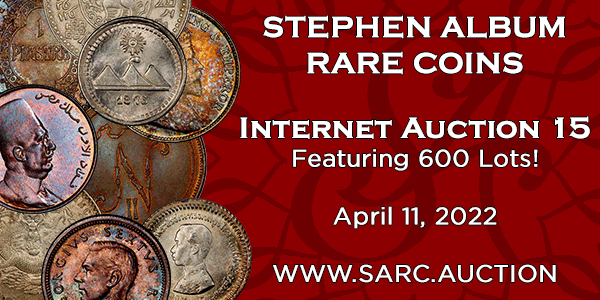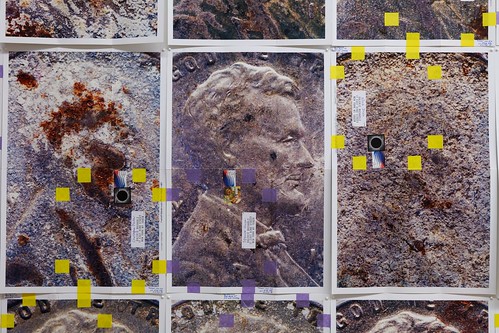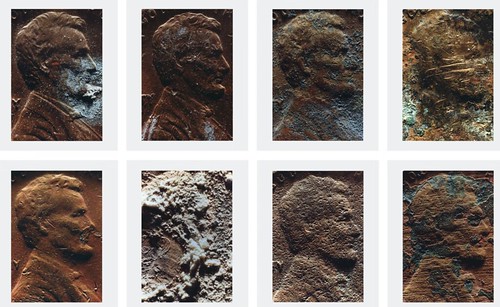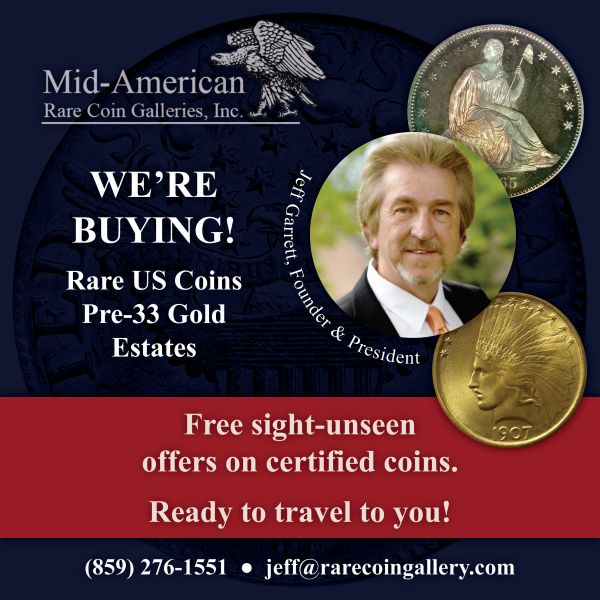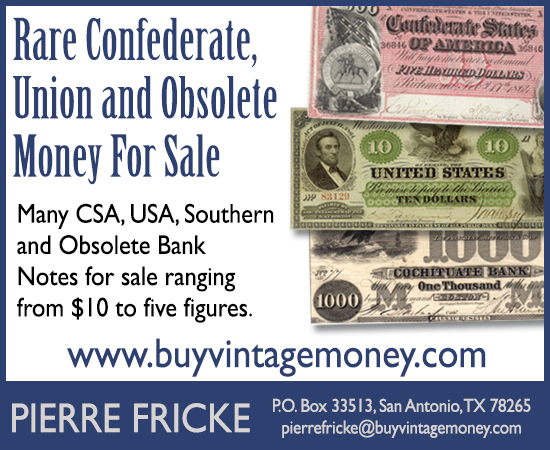
Visit our NBS Sponsors



About UsThe Numismatic Bibliomania Society is a non-profit association devoted to the study and enjoyment of numismatic literature. For more information please see our web site at coinbooks.org SubscriptionsThose wishing to become new E-Sylum subscribers (or wishing to Unsubscribe) can go to the following web page link MembershipThere is a membership application available on the web site Membership Application To join, print the application and return it with your check to the address printed on the application. Print/Digital membership is $40 to addresses in the U.S., and $60 elsewhere. A digital-only membership is available for $25. For those without web access, write to: Charles Heck, Treasurer AsylumFor Asylum mailing address changes and other membership questions, contact Chuck at this email address: treasurer@coinbooks.org SubmissionsTo submit items for publication in The E-Sylum, write to the Editor at this address: whomren@gmail.com BUY THE BOOK BEFORE THE COIN |
- WAYNE'S WORDS: THE E-SYLUM APRIL 10, 2022
- KOLBE & FANNING SYD MARTIN LIBRARY SELECTIONS
- NEW BOOKS: HALF CENT HANDBOOK VOLS 2-3
- NEW BOOK: PEACE MEDALS AT THE DENVER MUSEUM
- NEW BOOK: MALLA ERA COINS OF NEPAL
- NEW BOOK: MONEY AND EMPIRE
- NEW BOOK: SILVER IN CHINESE CURRENCY
- PERIODICAL: OCCASIONAL NUMISMATIC PAPERS
- PERIODICAL: NUMISMATIQUE ASIATIQUE MARCH 2022
- PAUL A. KRAEMER (1933-2022)
- NEW SMITHSONIAN GALLERY: REALLY BIG MONEY
- BARNABY FAULL JOINS DIX NOONAN WEBB
- DIX NOONAN WEBB BECOMES NOONANS
- NEWMAN PORTAL SYMPOSIUM HOLDS 4TH EVENT
- VIDEO: VIDEO GAME GRADING
- USING COINS TO STUDY ANCIENT HISTORY
- WOMEN'S RELIEF CORPS AT CIVIL WAR SHOWCASE
- NOTES FROM E-SYLUM READERS: APRIL 10, 2022
- KENNEDY HALF DOLLAR DESIGN PROPOSAL
- VOCABULARY TERM: IMPRESSED ERROR
- NUMISMAGRAM MEDAL SELECTIONS: APRIL 2022
- DIX NOONAN WEBB APRIL 12, 2022 SALE
- STEPHEN ALBUM INTERNET AUCTION 15
- NUMISMATIC NUGGETS: APRIL 10, 2022
- STUDY EXAMINES DEBASEMENT OF ROMAN DENARII
- COINS OF MEDIEVAL SERBIA
- FIRST COINS STRUCK FROM CALIFORNIA GOLD
- QUEEN WITHDRAWS FROM THE MAUNDY SERVICE
- COPPERHEADS BY MOYRA DAVEY
- HERITAGE FACES WORLD SERIES RING LAWSUIT
- SAVING UKRAINE'S DIGITAL HISTORY
- LOOSE CHANGE: APRIL 10, 2022
Click here to read the thin version on the web
Click here to subscribe
Click here to access the complete archive
To comment or submit articles, reply to whomren@gmail.com
Content presented in The E-Sylum is not necessarily researched or independently fact-checked, and views expressed do not necessarily represent those of the Numismatic Bibliomania Society.
WAYNE'S WORDS: THE E-SYLUM APRIL 10, 2022
 New subscribers this week include:
Nancy Jones and
Larry Grinstead.
Welcome aboard! We now have 6,985 subscribers.
New subscribers this week include:
Nancy Jones and
Larry Grinstead.
Welcome aboard! We now have 6,985 subscribers.
Thank you for reading The E-Sylum. If you enjoy it, please send me the email addresses of friends you think may enjoy it as well and I'll send them a subscription. Contact me at whomren@gmail.com anytime regarding your subscription, or questions, comments or suggestions about our content.
This week we open with Syd Martin library selections, six new books, two periodicals, an obituary, and a new numismatic exhibit at the Smithsonian.
Other topics this week include Barnaby Faull, Noonans, the NNP Symposium, the Civil War Showcase, notes from readers, auction reviews, coins of medieval Serbia, and the first coins struck from California gold.
To learn more about the Peter Gschwend collection, Half Cents, Indian Peace Medals, the coins of Nepal, Swedish Plate Money, the Hansen collection, Woman's Relief Corps medals, impressed errors, the Anguilla Liberty Dollar, the Congress of the C. S. A. medal, Royal Maundy coins, and Sotheby's, read on. Have a great week, everyone!
Wayne Homren
Editor, The E-Sylum
KOLBE & FANNING SYD MARTIN LIBRARY SELECTIONS
Here are some more selections from the numismatic library of researcher and author Syd Martin, being sold by Kolbe & Fanning at the end of the month. -Editor
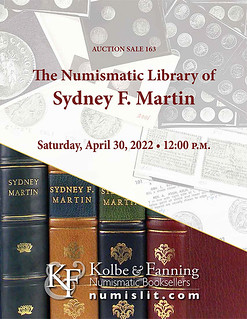 On April 30, 2022, Kolbe & Fanning Numismatic Booksellers will be selling the outstanding library formed by Sydney F. Martin. The Martin Library is one of the finest formed on the subject of early American coinage, and includes many titles on related areas of European numismatics as well. We are honored to have been asked to sell the library at auction, having worked closely with Syd as he built it.
On April 30, 2022, Kolbe & Fanning Numismatic Booksellers will be selling the outstanding library formed by Sydney F. Martin. The Martin Library is one of the finest formed on the subject of early American coinage, and includes many titles on related areas of European numismatics as well. We are honored to have been asked to sell the library at auction, having worked closely with Syd as he built it.
Some highlights of the sale include:
Lot 64, Walter Breen's personal copy of his complete Encyclopedia—an extraordinary volume with thousands of annotations.
Lot 77, Browning on early U.S. quarters, extensively annotated throughout by Walter Breen, with various inserts
Lot 12: a beautifully bound complete set of the 1866–1924 American Journal of Numismatics
Lot 36: Walter Breen's heavily annotated copy of Bolender's The United States Early Silver Dollars from 1794 to 1803, greatly expanded with Breen's notes
Lot 57: Breen's original 1951–1952 notes, drafts and letters relating to the Stepney Hoard of early American copper coins
Lot 61: the annotated master copy of Walter Breen's typescript of his Encyclopedia of United States Half Cents, with related correspondence
Lot 181: the original 1738 French royal edict authorizing the sols of 24 deniers and depicting their specified designs
Lot 131: a set of the Colonial Newsletter, finely bound in red half morocco with marbled sides
Lot 141: the Garrett Family's annotated 1878 printing of Sylvester S. Crosby's Early Coins of America
Lot 161: the special edition, bound with plates, of Tom Elder's 1908 catalogue of the Peter Gschwend collection
Lot 235: David Proskey's annotated first edition copy of Edward Maris's Historic Sketch of the Coins of New Jersey
Lot 262: José Toribio Medina's rare and important Las Medallas del Almirante Vernon, one of only 100 copies printed.
Register early to bid online
Bids may be placed via post, email, fax or phone, as well as online. Kolbe & Fanning use Auction Mobility as our third-party online bidding platform. Auction Mobility is an app-based platform allowing users the ability to participate in the sale through phones, tablets and computers. To register for the sale, bidders must go to
bid.numislit.com and sign up. Once you have set up an account, you may browse lots, place advance bids, or participate in the live sale online. Those wishing to participate on their devices can download the Kolbe & Fanning app through the Apple or Google Play Store. The sale is also listed on Biddr and NumisBids.
The printed catalogue of the Martin Library has been mailed to all active customers on our mailing list. As international mail speeds have been slow in recent months, we encourage our international clients to consult the electronic catalogue in case their printed catalogue does not arrive promptly. A PDF of the printed catalogue has been posted to our main website at numislit.com for those who prefer that format. Bids placed via post, email, fax or phone must be received by April 29, the day before the sale, in order for them to be processed. Advance absentee bids may also be placed at any time online at bid.numislit.com. Live internet bidding will be available during the sale itself through the same platform.
Kolbe & Fanning Numismatic Booksellers LLC is a licensed and bonded auction firm in the State of Ohio. For more information, please see the Kolbe & Fanning website at numislit.com or email David Fanning at df@numislit.com. To register for the sale, go to bid.numislit.com. We look forward to your participation.
To read the earlier E-Sylum article, see:
KOLBE & FANNING SYD MARTIN LIBRARY SALE
(https://www.coinbooks.org/v25/esylum_v25n14a02.html)
THE BOOK BAZARRE
NEW BOOKS: HALF CENT HANDBOOK VOLS 2-3
Since our last article author Ed Fuhrman has published two more volumes in his series on U.S. half cents. -Editor
Vol 2: The Half Cent Handbook - Classic Head and Braided Hair Varieties
Vol 3: The Half Cent Handbook - Liberty Cap Varieties 1793-1797
Released in September 2021 and April 2022, the books are part of a four volume set covering U.S. Half Cents. Both are limited edition hard covers in full color, with smyth sewn bindings.
The third book in the series is hard cover, full color, and focuses on the Liberty Cap Half Cents from 1793-1797. This volume is the largest of the set with over 250 pages and comes fully loaded with updates and valuable information on die varieties, die states, grading, attribution, rarity, prices, cherry picking tips, new discoveries, and a whole lot more. Everything is laid out in a clear and concise manner with full color photos. A user-friendly attribution guide for each die variety will allow collectors of all levels to quickly & easily identify any Liberty Cap variety. The book also contains several personal anecdotes as well as tips on cherry picking the rarest die varieties.
The Classic/Braided book is 157 pages, $100
The Liberty Caps book is 253 pages, $125.
Volume 1 on Draped Bust varieties is still available at $105.
Shipping to U.S. addresses is included.
The fourth and final volume cover Half Cent mint errors and will be available this fall.
Books are available directly from the author: Guitarman68@optonline.net
To read the earlier E-Sylum articles, see:
NEW BOOK: THE HALF CENT HANDBOOK
(https://www.coinbooks.org/v24/esylum_v24n08a06.html)
REVIEW: THE HALF CENT HANDBOOK
(https://www.coinbooks.org/v24/esylum_v24n09a07.html)
BOOK REVIEW: THE HALF CENT HANDBOOK
(https://www.coinbooks.org/v24/esylum_v24n15a06.html)
ARTICLE HIGHLIGHTS AUTHOR ED FUHRMAN
(https://www.coinbooks.org/v24/esylum_v24n20a14.html)
NEW BOOK: PEACE MEDALS AT THE DENVER MUSEUM
A new book on Indian Peace Medals has been published. -Editor
Indian Peace Medals and Other Medals at the Denver Museum of Nature and Science, DMNS Annals Journal, No. 9, March 25, 2022, by Lawrence J. Lee and Stephen E. Nash.
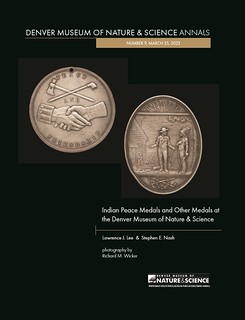 The Denver Museum of Nature and Science Annals is an open-access, peer-reviewed scientific journal that publishes original research by DMNS staff and research associates in anthropology, geology, paleontology, botany, zoology, and space and planetary sciences. These occasional papers typically focus on objects and specimens from within the Museum's 4.3 million-piece collection.
The Denver Museum of Nature and Science Annals is an open-access, peer-reviewed scientific journal that publishes original research by DMNS staff and research associates in anthropology, geology, paleontology, botany, zoology, and space and planetary sciences. These occasional papers typically focus on objects and specimens from within the Museum's 4.3 million-piece collection.
Annals No. 9 addresses the Department of Anthropology's large collection of medals relating to Native Americans, including Indian peace medals. Dr. Stephen E. Nash is the Museum's Director of Anthropology and Senior Curator of Anthropology; in 2017, he enlisted Dr. Lawrence J. Lee, a professional numismatist and subject matter expert, to analyze the Museum's numismatic collection. Those holdings include more than 200 medals collected by two of the Museum's primary benefactors, Mary and Francis Crane.
The Cranes represented the last of the generation of grand amateur collectors—the elite group of bluebloods who believed their class, status and wealth were to be used to benefit all levels of society. In their case, the Cranes travel the country between 1951 and Francis' death in 1968, visiting Indian reservations, trading posts, and museums in search of high-quality artifacts that represented the finest in Native American artisanship. Their goal was to establish their own museum, dedicated to the American Indian. In this, they succeeded, establishing the Southeast Museum of the North American Indian on Marathon Key, Florida, in 1958.
Among the most revered items in their museum were Indian peace medals. The
Cranes were interested in any medal pertaining to Indians
, as they regularly informed their dealer network. In particular, they liked the large, silver peace medals, eventually building a sizable collection of medals from France, England, Canada, and the United States.
Lee and Nash's book traces the Crane's medal purchasing history through a number of prominent coin dealers including John J. Ford, Jr., and Katherine Bullowa, the latter one of the first female coin dealers in the business. Bullowa's 1967 sale of 17 genuine Indian peace medals to the Cranes, in a single transaction, would certainly qualify as a seismic event in the numismatic world if it were to happen today. Back then such deals were completed quietly, without broadcast by either side in the transaction.
Many numismatists will find the correspondence between Ford and Francis Crane regarding the sale and subsequent return by the Cranes of an oval George Washington Peace Medal interesting and insightful. The book also chronicles the Crane's friendship with Fr. Francis Prucha, the Marquette University scholar and leading expert on American Indian peace medals, and their friendship with Chris Schenkel, sports broadcaster and fellow collector of Indian peace medals.
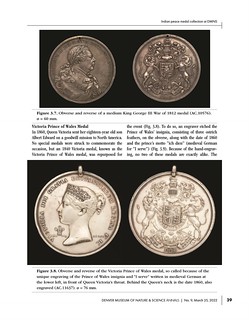 The book has multiple sidebars covering topics and other museum holdings relevant to the primary discussion of medals. One sidebar notes that William Clark, of Lewis and Clark Expedition fame, owned the best and earliest collection of Indian peace medals and for a time had them on display at his council house in St. Louis. In another sidebar, Nash addresses the Native American Graves Protection and Repatriation Act of 1990 and its ramifications for Indian peace medals found in burials.
The book has multiple sidebars covering topics and other museum holdings relevant to the primary discussion of medals. One sidebar notes that William Clark, of Lewis and Clark Expedition fame, owned the best and earliest collection of Indian peace medals and for a time had them on display at his council house in St. Louis. In another sidebar, Nash addresses the Native American Graves Protection and Repatriation Act of 1990 and its ramifications for Indian peace medals found in burials.
Lee and Nash identify nine categories of medals in the Crane Collection, with the most important being the Indian peace medal series. Among those, the DMNS collection includes a 1789 oval George Washington medal, an 1804 Thomas Jefferson large-size shell medal, and several large Canadian medals including a rare Treaty Six medal with its accompanying certificate, flag, and photo of the medal's recipient wearing his medal.
Other chapters in the Annals include a section on Fur Trapper Medals, where the Museum's rare Pierre Chouteau medal is described; a chapter on Objects with Imbued Power that describes how Jesuit religious medals became confused with Spanish peace medals. Yet another section tackles the awkward and difficult issue of fakes, forgeries and restrikes—the dark underside of the medal collecting hobby. There is also a chapter on Betts medals and other early colonial medals pertaining to Indians.
The book includes a glossary of numismatic terms used relating to medals and minting. An Appendix lists all the medals in the Crane Collection with descriptive data on each medal. The book is lavishly illustrated with high quality, life-size obverse and reverse images of 116 individual medals, as well as occasional detail shots, all taken by Museum photographer Rick Wicker.
Stephen E. Nash
Steve Nash is Director of Anthropology and Senior Curator of Archaeology at the Denver Museum of Nature & Science, where he has worked for nearly 15 years. He conducts fieldwork and collections-based research on the ancient Mogollon archaeology of southwestern New Mexico. He has written and edited seven books on topics ranging from archaeological tree-ring dating to Russian gem carvings by Vasily Konovalenko, and from the history of museums to scholarly biography. His most recent book is Pushing Boundaries: Proceedings of the 18th Southwest Symposium, an edited volume consisting of 20 chapters on southwestern American archaeology, and which will be published in 2021.
Lawrence J. Lee
Larry Lee is a professional numismatist who works with public museums in evaluating, curating and exhibiting their numismatic holdings. He has curated 23 major museum exhibitions and authoring over 50 numismatic articles. His previous books include The Coins of Fort Atkinson: a study in numismatic archeology (2016). Lee has a Bachelor of Arts degree in Archeology and a Master of Arts degree in Museum Studies. His PhD dissertation examined the historical loss of stature of American numismatics, from recognized academic discipline to nerdish hobby and subject of late-night television charlatans.
NOTE: The following link wasn't quite working at publication time, but we expect the problem to be rectified by the time most readers open their issue. Let me know if it's not working for you. -Editor
Copies of this wonderful new volume are available for free download at www.dmns.org/Science/Museum-Publications (ISSN 1948-9307). Paperback print copies (147 pages, 135 plates; ISSN 1948-9293) are available for purchase at www.lulu.com for less than $30.
NEW BOOK: MALLA ERA COINS OF NEPAL
This report from Kathmandu discusses a new book on the Malla era coins Of Nepal. -Editor
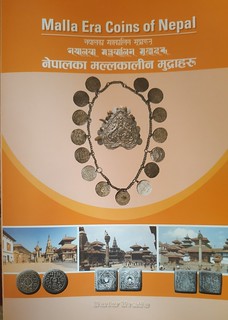 Writer and coin collector Shankar Shrestha has released his latest book "Malla Era Coins Of Nepal" amid a special function organized at Agarwal Bhawan, Kamalpokhari on Saturday.
Writer and coin collector Shankar Shrestha has released his latest book "Malla Era Coins Of Nepal" amid a special function organized at Agarwal Bhawan, Kamalpokhari on Saturday.
The newly-published book attempts to cover the medieval & the Malla history of about 900 years. A simple presentation of coins with various artifacts and its cultural, religious themes, scripts, yantras, years, dates etc are included in the book.
"I believe that this book will be especially useful and enlightening for all the readers interested in history as well as all the collectors of the Malla period coins," Shrestha said.
Sher argued that the book is the first of its kind and the topics covered will increase the curiosity of the readers as it has its own special significance. The book also carries the concept of increasing our knowledge on our own, he added.
Coin collectors and interested people from various professions attended the program. The price of Shrestha's book is Rs 2,500 and is available at PhilaNumis Center, Jaishidewal.
To read the complete article, see:
Book on Malla-era coins released
(https://myrepublica.nagariknetwork.com/news/book-on-malla-era-coins-released/)
NEW BOOK: MONEY AND EMPIRE
Recently published is Money and Empire: coin influence and change from a world perspective
.
Here's an excerpt from the announcement in the Chinese Money Matters blog published by Helen Wang, Curator of East Asian Money, The British Museum.
-Editor
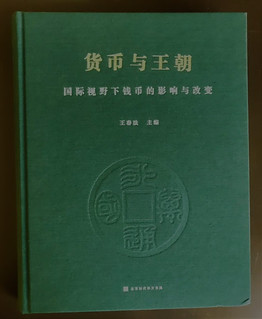 WANG Chunfa:Huobi yu wangchao: guoji shiyexia qianbi de yingxiang yu gaibian. Beijing shidai huawen shuju. ISBN 978-5699-3724-4. [WANG Chunfa (ed.-in-chief). Money and Empire: coin influence and change from a world perspective. Beijing: Beijing Shidai Huawen shuju, 2020. 325 pp. In Chinese]
WANG Chunfa:Huobi yu wangchao: guoji shiyexia qianbi de yingxiang yu gaibian. Beijing shidai huawen shuju. ISBN 978-5699-3724-4. [WANG Chunfa (ed.-in-chief). Money and Empire: coin influence and change from a world perspective. Beijing: Beijing Shidai Huawen shuju, 2020. 325 pp. In Chinese]
This volume is the proceedings of the international conference held at the National Museum of China, 13-14 November 2019. It contains the 32 papers listed below (my translations are approximate) and foreword by the Director of the National Museum of China. A total of 42 papers were presented at the conference and are listed at the back of the book.
- WANG Chunfa (Director, National Museum of China) – Foreword (p.3)
- HUANG Xiquan (Zhengzhou University) – On a newly seen Fancao spade-money weight and Banquan, site of the war between Yandi and Huangdi (p.1)
-
HE Ping (China Renmin University) – The principles of coin casting and circulation in ancient China, and the hierarchical structure of money, as see in in King Jing of Zhou's
casting large coins
(p.7) - DI Shengli (National Museum of China) – Inscriptions on the large knife-money of Qi (p.13)
- ZHU Anxiang (Hebei Normal University) – Currency circulation in the Wei, Jin and Northern and Southern Dynasties (p.27)
- GAO Cui (National Museum of China) – Popular customs relating to paper money in the Tang dynasty (p.40)
-
JIANG Shunyuan (National Museum of China) – Wen Tianxiang's
Shang Hong Zhai Tie
reveals a paper money crisis in the late Song dynasty (p.46) - ZHOU Xiang (Shanghai Museum) – The Dachao tongbao and associated questions (p.52)
-
LIU Shunqian (Palace Museum Department of Scientific Research) –
Tian qi xing qian
and the unification of the national currency in Yunnan in the Ming dynasty (p.59) -
TONG Chunyan (National Museum of China) –
Amituofu
charms (p.68) - YE Daoyang (Guangdong Maritime Silk Road Museum) – On the currency objects excavated from the Nanhai No. 1 Shipwreck (p.75)
- WANG Liyan (National Museum of China) – Gold in China's ancient monetary system (p.82)
- ZHAO Xiaoming (Xi'an Numismatic Museum) – Gold money in China – historical predicament and sources (p.93)
- WANG Xianguo (Capital Museum) – The use of silver in early China and the development of the silver liang system (p.106)
-
WANG Jijie (China Numismatic Museum) – The
nan liang gai zhi
50-ounce ingot of Tianqi 1 (1621) and associated questions (p.114) - WU Danmin (Shanghai Museum) – On silver currency in the Ming dynasty (p.121)
- LI Jinxiu (Institute of Historical Research, Chinese Academy of Social Sciences) – On the Sasanian silver coins in the Shuozhou Museum, Shanxi
- YANG Fuxue (Dunhuang Academy) and YUAN Wei (Guizhou Provincial Museum) – The evolution of inscriptions on Central Asian Hellenistic coins
- GUO Yunyan (Hebei University) – A catalogue of the Byzantine gold coins and gold pieces found in China (p.146)
- LI Xiaojia (Zhongshan University) – An exploration of the changes in headwear on the obverse of Sasanian coins before the 5th century
- Agshun Aliyev (Beijing Foreign Languages University) – Ancient coins unearthed in Azerbaijan and their value on the Silk Road (p.177)
- QI Xiaoyan (Changzhi Institute) – On Sogdian imitations of Chinese ‘Kaiyuan tongbao' coins (p.188)
- ZHENG Yue (Yinchuan Branch, People's Bank of China) –The cultural characteristics of world coins from the dual perspective of coins made in East and West (p.190)
- ZHOU Weirong (China Numismatic Museum) – The Influence of the Silk Road on China's silver money (p.198)
- LAN Rixu (China Central Finance University) – The evolution and characteristics of Silk Road Money (p.208)
- DAI Jianbing (Hebei Normal University) – Trade between ancient India and China and the exchange of coin culture (p.216)
- CAO Guangsheng (Jiu Da Cultural Media Co.) – Han-to-Tang East-West cultural exchange and fusion as seen in the coins of the Zhaowu Nine Tribes (p.224)
- Jonathan JARRETT (University of Leeds), tr. ZHANG Yue – Market exchange in the Byzantine empire and the Reform of Emperor Anastasius I (p.266)
- ZHOU Jianming (Institute of Culture, History and Tourism Management, Guangxi University, and Guilin Numismatic Society – A world view of coins circulation and influence – from the perspective of silver dollars of Annam circulating in China's southwestern border areas (p.277)
- YUAN Lin (Xi'an Branch, People's Bank of China) – The large influx of Japanese and Vietnamese cash into China in the 18th and 19th centuries and how the Qing government responded to it (p.285)
- Georges DEPEYROT (École Normale Supérieure, Paris), tr. ZHANG Yue – The relationship between metal and coins in Europe (p.296)
- Helen WANG (British Museum), tr. ZHANG Yue – Displays of coins and medals at the British Museum, 1759-2019 (p.307)
- The Papers Presented at the Conference // 研讨活动读论文目录 (p.324)
To read the complete article, see:
84. BOOK: MONEY AND EMPIRE
(https://chinesemoneymatters.wordpress.com/2022/03/31/84-book-money-and-empire/)
NEW BOOK: SILVER IN CHINESE CURRENCY
The Shanghai Museum has published a new book on silver in the history of Chinese currency. Here's an excerpt from the announcement in the Chinese Money Matters blog published by Helen Wang, Curator of East Asian Money, The British Museum. -Editor
Shanghai Museum (ed.), Yiyi qian nian: Zhongguo huobi shi zhong de baiyin. Shanghai: Shanghai Museum, 2019. ISBN ISBN 978-7-5479-1987-3. 187 pp.
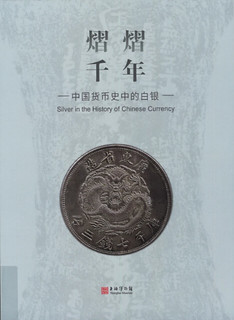 This is the catalogue of the exhibition at the Shanghai Museum, in 2019. Curated by Wu Danmin, the exhibition centred on the Shanghai Museum's excellent collection, with loans from China's Finance and Taxation Museum, the Sichuan Provincial Cultural Relics and Archaeological Research Institute, the National Center of Underwater Cultural Heritage, and Guangdong Provincial Institute of Cultural Relics and Archaeology. The index (in Chinese and English) gives the captions to the 130 objects illustrated in the catalogue.
This is the catalogue of the exhibition at the Shanghai Museum, in 2019. Curated by Wu Danmin, the exhibition centred on the Shanghai Museum's excellent collection, with loans from China's Finance and Taxation Museum, the Sichuan Provincial Cultural Relics and Archaeological Research Institute, the National Center of Underwater Cultural Heritage, and Guangdong Provincial Institute of Cultural Relics and Archaeology. The index (in Chinese and English) gives the captions to the 130 objects illustrated in the catalogue.
There are four forewords (in Chinese and English):
YANG Zhigang, Director, Shanghai Museum (pp. 6-7)
XU Xiang, China's Finance and Taxation Museum (pp. 8-9)
TANG Fei, Vice Dean, Sichuan Archaeology Research Institute (pp. 10-11)
SUN Jian, National Center of Underwater Cultural Heritage (pp. 12-13)
These are followed by four essays (in Chinese, with an English abstract):
WU Danmin — Zhongguo huobi shi zhong de baiyin // The Silver in the History of Chinese Currency (pp. 14-20)
Abstract: The natural attributes of gold and silver give them the advantage over other metals to function as a form of payment. In Europe the history of silver working as currency and as vessels or adornments had virtually overlapped while it was not the same in China. Silver had been valued as precious metal as well as long-distance exchange media in the history of Chinese currency until by the end of sixteenth century that it became a standard currency in the monetary system. The Age of Exploration in the fifteenth century speeded up the global circulation of silver and saw its enormous influx into China which fueled the metallic currency market. To some extent, the maritime trade stimulated China's commerce and industry, and urged a more advanced currency system to match its development. Silver eventually acted as a significant role on the stage and backed all of China's economy.
CHEN Yang — Baiyin huobi beihou de caizheng tuishou – Tangdai zhi Mingdai yinding zhong suojian baiyin yu caizheng de guanxi // Pushing Hands Behind: The Relationship between the Silver Ingots and the Finance from the Tang to the Ming Dynasties (pp. 20-27)
Abstract: The thesis attempts to reveal the relationship between silver ingots and government's income and expenditure on the analysis of the inscriptions and text material based on various forms of silver currency from the Tang to the Ming dynasties. It aims to investigate how the national's finance and taxation system worked out to set up a silver standard monetary system through the functions of silver currency transferred from a method of large-scale payment in common commodity to considerable tax generated from goods in great volume of trade.
LIU Zhiyan — Zheji chensha yin wei xiao: Jiangkou chen yin yizhi fajue ji // The Underwater Archaeological Finding of Silver from the Jiangkou Site (pp. 28-32)
Abstract: This paper is aimed to tell the inside stories of the underwater archaeological finding of a sunken silver hoard in Jiangkou from the perspective of the archaeologist on-site, with some unrevealed details of how the site was discovered and excavated as well as the spiritual journey that the author experienced in the whole process. The article focuses on recording the archaeologists' efforts in this first underwater practice in Sichuan province and so far the largest scaled underwater archaeological excavation of rivers in China. This tremendous discovery proved the legend of Zhang Xianzhong hiding a large silver treasure underwater at Jiangkou a real story and once again, the significance of archaeological evidence in the study of Chinese history.
YE Daoyang — ‘Nanhai yihao' chutu de yi pi jinshu huobi // Metal Coins Excavated from the Nanhai I Shipwreck (pp. 33-35).
Abstract: The Nanhai I shipwreck was originally located in the border area between Taishan City and Yangjiang City of Guangdong Province. It was discovered in the late 1980s. Afterward, the wreck was entirely unwatered and shifted to the Maritime Silk Road Museum of Guangdong in 2007. It has been conducted with excavation since 2014. It is a very important discovery so far in the history of China's underwater archaeology. It is also very important relics along the Maritime Silk Road. // The Nanhai I shipwreck was basically preserved under sea mud. It is loaded with cargo of trade goods of the Southern Song Dynasty. The wreck is 22 meters long and 9.9 meters wide, with a sharp bow, square stern and multiple plates on both sides. Its structure is suitable for seagoing voyage, known as ‘Fu Chuan', or literally Fortune Ship.
The Song dynasty was a prosperous period for China's coinage industry. Silver began to circulate as an important part of the financial system. The development of overseas trade led to an increasing importance of the precious metals such as gold and silver of high value, light weight and convenient for long distance transportation. The Song people normally call it ‘light assets' for both the silk and precious metals. // In the wreck, 290 kg of silver ingots have been excavated. It has also yielded a lot of gold leaves, as well as a large quantity of gold, silver and copper coins. The silver ingots displayed in this exhibition were intended to be carried abroad for use, so that the audience can also imagine the scenery of prosperous foreign trade in the Song Dynasty.
These are followed by the catalogue in three sections:
Chuantong yinliang // The Traditional Silver Ingots (pp. 36-95)
Baiyin dongzhe // Silver Travelling to the East (pp. 96-127)
Yin yu zhichao // Silver and Paper Money (pp. 128-181)
Suoyin // Index (pp. 182-186)
To read the complete article, see:
85. BOOK: SILVER IN THE HISTORY OF CHINESE CURRENCY
(https://chinesemoneymatters.wordpress.com/2022/04/01/85-book-silver-in-the-history-of-chinese-currency/)
PERIODICAL: OCCASIONAL NUMISMATIC PAPERS
Christopher Faulkner and Jacob Lipson are launching a new publication on Canadian numismatics. Excellent! Here's the announcement. -Editor
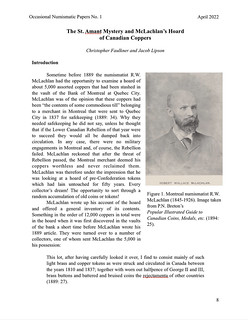 We are pleased to announce the forthcoming release of Occasional Numismatic Papers, a new online publication devoted to original Canadian numismatic research. The idea behind these Papers is simply to create a fresh venue for interesting research on numismatic topics along with a forum for numismatic notes and queries. The first number will appear April 18, 2022. Articles include
We are pleased to announce the forthcoming release of Occasional Numismatic Papers, a new online publication devoted to original Canadian numismatic research. The idea behind these Papers is simply to create a fresh venue for interesting research on numismatic topics along with a forum for numismatic notes and queries. The first number will appear April 18, 2022. Articles include Chasing Joseph Moreau
and The St. Amant Mystery and McLachlan's Hoard of Canadian Coppers.
The Papers are privately published by the editors and are not the publication of any numismatic association, organization, society, or club. There are no subscription fees or membership dues. The Papers are not supported financially by a third party.
The Papers will be available through the Newman Numismatic Portal.
To read the issues on the Newman Portal (after April 18, 2022), see:
https://nnp.wustl.edu/Library/Periodicals#O
PERIODICAL: NUMISMATIQUE ASIATIQUE MARCH 2022
Here are the contents of the latest issue of Numismatique Asiatique. -Editor
Numismatique, Russie et Ukraine
Numismatics, Russia and Ukraine
CHINA
Tongzhi Tongbao pattern coin made by Monnaie de Paris
by Jun Li
EXTREME-ORIENT
Numismatique et orientalisme en Russie :
A propos du Recueil du Baron de Chaudoir (Première partie)
par François Joyaux
CHINA and RUSSIA
Gilded by time : small copies of Dao-guang tong-bao as witnesses of the "Gold Rush" of the late XIX century in the Amur River region
by Andrey Y. Ivlev
JAPAN
The Fake Japanese Tenpo Tsuho Coins Made by Kaga, Chiyotaro
by Craig Greenbaum
FRANCE-ASIE
La médaille frappée à l'occasion de la fondation
de la Société Asiatique, le 1er avril 1822
par Olivier de Bernon
Bibliographie :
La Numismatique Annamite de D. Lacroix en vietnamien
In mémoriam :
Muriel Eymery
For more information, see:
https://sites.google.com/site/societedenumismatiqueasiatique/revue
PAUL A. KRAEMER (1933-2022)
Rochester Numismatic Association past president Paul A. Kraemer has passed. -Editor
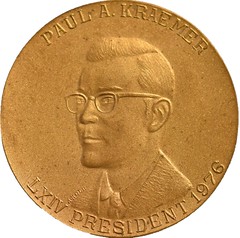 RNA member Nick Graver writes:
RNA member Nick Graver writes:
"He joined RNA the same year I did, 1963, and he is member # 3, I am # 4 He was president in 1976.
Paul specialized in Rochester material, Any and All Rochester items: tokens, medals, buttons, you name it, and he would collect it. His wife, Nancy, (still living) was the dealer of the team, and often set up a table at our annual RNA Rochester Coin Show."
Medal image courtesy Pete Smith. Here's an excerpt from Paul's online obituary. -Editor
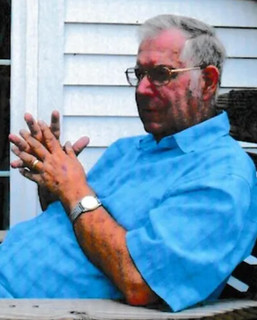 Paul passed away peacefully at home, surrounded by his wife and children.
Paul passed away peacefully at home, surrounded by his wife and children.
Paul was predeceased by parents August and Lena Kraemer and brother Werner "Zip" Kraemer.
Paul grew up by Ellison Park, and graduated from Brighton High School. He then served in the US Navy during the Korean Conflict. He was a former board member for The Hillside Children's Center. He was an avid coin collector — a member and past president of the RNA. He worked at Eastman Kodak Co. for 33 years.
After they both retired, Paul and Nancy enjoyed many years in DeLand, Fla.
To read the complete article, see:
Paul A. Kraemer
(https://www.democratandchronicle.com/obituaries/rdc171007)
To visit the Rochester Numismatic Association website, see:
http://www.rochesternumismaticassociation.org/
NEW SMITHSONIAN GALLERY: REALLY BIG MONEY
National Numismatic Collection Curator Dr. Ellen Feingold writes:
"I am writing with some happy news – we opened a new money gallery for children at the Smithsonian called Really BIG Money. It is our second money gallery and joins The Value of Money, which opened in 2015. I am so happy that we now have two dedicated galleries to showcase the National Numismatic Collection."
That is great news! Here are more details. -Editor
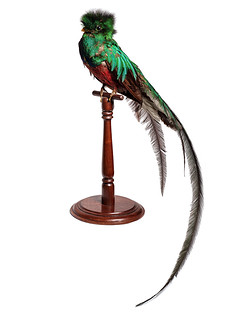 Really BIG Money is an exciting new money gallery for children. It features some of the world's largest and most surprising monetary objects. Big in size, quantity, or denomination, each piece can help children learn about the world around them, including communities and cultures, the natural environment, political leaders, and the process of exchange. Highlights include the long tail feathers of a Resplendent Quetzal bird, a 31-pound Swedish copper plate, and a coin head made from 165 Roman coins.
Really BIG Money is an exciting new money gallery for children. It features some of the world's largest and most surprising monetary objects. Big in size, quantity, or denomination, each piece can help children learn about the world around them, including communities and cultures, the natural environment, political leaders, and the process of exchange. Highlights include the long tail feathers of a Resplendent Quetzal bird, a 31-pound Swedish copper plate, and a coin head made from 165 Roman coins.
Aligned to elementary social studies learning standards, Really BIG Money teaches children about world cultures and supports the development of financial literacy. It also promotes creative thinking through a blend of object investigations and interactive experiences throughout the gallery. Visitors can measure themselves next to a five-foot seven-inch currency blade and see their own faces on money through customized mirrors. Play the gallery's Match the Money
game online or while visiting the gallery. Match all of the objects and unlock a magical animation showing a flying quetzal bird traveling the world through banknotes!
To read the complete article, see:
Really BIG Money
(https://americanhistory.si.edu/exhibitions/really-big-money)
NOTE: 'Billionen' in German translates to 'Trillion' in English. -Editor
To read the complete article, see:
What can really BIG money teach us about our world?
(https://americanhistory.si.edu/blog/what-can-really-big-money-teach)
BARNABY FAULL JOINS DIX NOONAN WEBB
There's a lot more happening at Dix Noonan Webb. This announcement reports that banknote specialist Barnaby Faull is joining the firm. -Editor
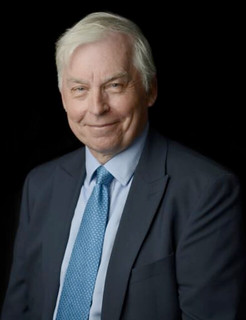 International Coin and Banknote Auctioneers Dix Noonan Webb are extremely pleased to announce that leading Banknote expert Barnaby Faull will be joining the Mayfair saleroom from Friday, April 1, 2022 as Senior Specialist.
International Coin and Banknote Auctioneers Dix Noonan Webb are extremely pleased to announce that leading Banknote expert Barnaby Faull will be joining the Mayfair saleroom from Friday, April 1, 2022 as Senior Specialist.
Barnaby Faull said I am delighted to be able to come out of what has proved to be a very short retirement to join the Banknote Department at Dix Noonan Webb, where I will be working alongside an already established team of experts, all of whom I have known for many years. I am very much looking forward to doing all that I can to accelerate the momentum that they have achieved and to reconnect with the many friends that I have made over the years in the banknote world.
Pierce Noonan, CEO of Dix Noonan Webb said: The appointment of Barnaby is a major new signing for us and we are delighted to be welcoming him to the DNW team. Barnaby has been at the forefront of the commercial sale of banknotes for decades and brings with him an unparalleled wealth of experience in this increasingly popular field. The arrival of Barnaby creates for us a dream team of banknote experts, where he joins Thomasina Smith, Andrew Pattison and Michael O'Grady, all of whom he has worked with previously.
Barnaby started his long career at Spink in the early 1970s and only retired in early 2022, having spent nearly half a century there. He began coin collecting at an early age and following a stint of holiday work at Spink joined this company full-time in the early 1970s at the age of 20. Twenty years later a vacancy opened up in the fledgling banknote department and Barnaby was given the post. At the time of his appointment banknotes were still a niche market and very much in the shadow of the far more illustrious coin and stamp fields but over the next 30 years Barnaby oversaw a sea-change in the banknote market. He was responsible for introducing some of the first dedicated banknote auctions in the world and soon became the leading player in this fast growing market. During his time working with banknotes, Barnaby has handled the sale of many of the world's most important private collections, in addition to those of many major Bank and institutional holdings.
For more information, see:
https://www.dnw.co.uk/
THE BOOK BAZARRE
DIX NOONAN WEBB BECOMES NOONANS
A name change is in the works for Dix Noonan Webb. -Editor
 From the end of April 2022, auctioneers Dix Noonan Webb (DNW) will be shortening its name to NOONANS. The internationally renowned auctioneers who have specialised in Medals and Coins for many years, and since 2015, Banknotes and Jewellery as well will continue to be based at their Mayfair saleroom (16 Bolton Street, London W1J 8BQ).
From the end of April 2022, auctioneers Dix Noonan Webb (DNW) will be shortening its name to NOONANS. The internationally renowned auctioneers who have specialised in Medals and Coins for many years, and since 2015, Banknotes and Jewellery as well will continue to be based at their Mayfair saleroom (16 Bolton Street, London W1J 8BQ).
Nimrod Dix, Deputy Chairman of Noonans said: When I first founded the business back in 1990 the Internet was barely a thing, customers viewed their lots in person and on sale days the saleroom was packed with eager bidders. Now, more than thirty years later our audience is spread across the globe and many of our customers interact with us solely via online technology without ever attending a sale. As a result of this seismic shift in the way that much of our business is transacted there has never been a better time for us to strengthen our company's corporate branding.
In relation to the shortening of the company name from Dix Noonan Webb to Noonans, Nimrod Dix commented: There really wasn't much to debate when it came to which one of our surnames to run with. Pierce had the more suitable one of the three of us and was also by far the youngest, so that was an easy decision to make.
With regards to the future, Nimrod went on to say, It did cross our minds when we decided to shorten our company name that some people might see it as a sign that Chris Webb and I were taking early retirement, so now is probably a good time to say that this is definitely not the case. I am still working full time heading up the company's medal department with no plans to retire any time soon and Chris spends most of his time on the road seeing clients. We are excited for the future and still have a lot to do, so it might be more accurate to say that we are only just getting started!
Pierce Noonan, CEO of Noonans said: While all of the fundamentals of our business remain unchanged, we hope that the launch of our improved website and new corporate branding will serve to level up the balance between the substance and style of our offering, providing an enhanced experience to the many clients that interact with us exclusively online. This step change in our visual identity also provides us with an opportunity to reposition our company for future expansion into other specialist fields.
For more information, see:
https://www.dnw.co.uk/
NEWMAN PORTAL SYMPOSIUM HOLDS 4TH EVENT
Newman Numismatic Portal Project Coordinator Len Augsburger provided this report from the weekend's NNP Symposium. Thanks! I hope many of our readers were able to tune in and participate. -Editor
Newman Portal Symposium Holds 4th Event
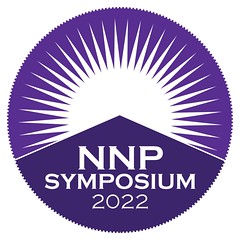 The Newman Portal Symposium, launched in fall 2020 in response to the pandemic, and now held twice per year, recently presented its fourth such event, which took place April 8-10. Video from all Symposium sessions will be available in 2-3 weeks, with notice published on the NNP Symposium website.
The Newman Portal Symposium, launched in fall 2020 in response to the pandemic, and now held twice per year, recently presented its fourth such event, which took place April 8-10. Video from all Symposium sessions will be available in 2-3 weeks, with notice published on the NNP Symposium website.
Our feature presentation profiled the collector Dell Loy Hansen, who, in a few short years, has nearly duplicated Louis Eliasberg's goal of assembling a complete set of U.S. coins. This video, produced by Lianna Spurrier of Numismatic Marketing, includes footage of the Hansen vault in addition to comments from Hansen himself on the formation of this significant collection.
Mike Garofalo, author of Secrets of the Rare Coin and Bullion Business, also presented during the NNP Symposium. Garofalo and John Feigenbaum, CDN Publisher, graciously made 60 copies of this recently published book available for free to NNP Symposium attendees. A small number remain; E-Sylum readers may send their name and address to NNPCurator@wustl.edu if they wish to receive a copy (delivery to U.S. addresses only).
Link to Dell Loy Hansen video:
https://youtu.be/I3CaNvMQjxA
Link to Newman Portal Symposium site:
https://nnpsymposium.org/
To read the earlier E-Sylum article, see:
FOURTH NNP SYMPOSIUM ANNOUNCED
(https://www.coinbooks.org/v25/esylum_v25n09a11.html)
VIDEO: VIDEO GAME GRADING
These are selections from the David Lisot Video Library that feature news and personalities from the world of coin collecting. David has been attending coin conventions since 1972 and began videotaping in 1985. The Newman Numismatic Portal now lists all David's videos on their website at:
https://nnp.wustl.edu/library/multimediadetail/522852
Here's one on the grading and marketing of old video games. -Editor
Long Beach Expo Helps You Find Out that Video Games Can Be Valuable!
VIDEO: 5:06
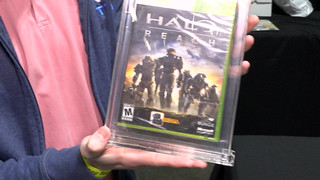 Heather Boyd, PCGS Marketing Director,
Heather Boyd, PCGS Marketing Director,
Deniz Kahn, Founder/President, WATA,
David Lisot, Video Producer, CoinTelevision.com.
February 17-19, 2022.
Video games are one of the newest collectibles trading at the Long Beach Expo. Find out what makes a video game collectable and how to participate in this new market.
David adds:
"This was an interview done at the Long Beach Expo in February. The Expo features other collectibles including stamps, sports, and now video games. Although this video is not directly numismatic it is what the grading services are doing to promote other areas of collecting. PCGS is owned by Collectors Universe and they own WATA that encapsulates and grades video games. The premise is the same that a buyer wants to be assured of what they buy in terms of authenticity and condition. Who would have thought that old video games could become valuable!"
An excerpt of the video is available for viewing on the Coin Television YouTube Channel at:
https://youtu.be/DiHapL0Z8dk
USING COINS TO STUDY ANCIENT HISTORY
In this press release from Whitman Publishing, author Ken Bressett discusses his new book and numismatics as a sub-discipline of archaeology. -Editor
Using Coins to Study the Context of Ancient History
Kenneth Bressett's newest book, Bible Lore and the Eternal Flame, debuted at the American Numismatic Association's National Money Show in Colorado Springs, March 10, 2022. Now the 224-page hardcover volume is available from bookstores and hobby shops nationwide, and online (including at Whitman.com). Here, Bressett discusses the book and his interest in numismatics as a sub-discipline of archaeology.
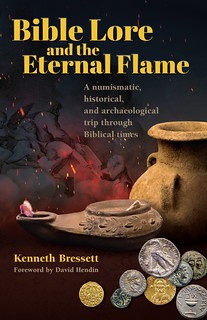 Numismatics is a study of currency that includes coins, tokens, paper money, and various other related objects. It is a subject that is of interest to coin collectors, researchers, students, and merchants, but in its purest form is a sub-discipline of archaeology similar to the investigation of materials related to commerce, including such things as pottery, jewelry, beads, metals, and barter items used by past civilizations. Studying these items has become a new source of interest and information for coin collectors who want to better understand how their treasured specimens relate to the economy and historical context of many diverse nations.
Numismatics is a study of currency that includes coins, tokens, paper money, and various other related objects. It is a subject that is of interest to coin collectors, researchers, students, and merchants, but in its purest form is a sub-discipline of archaeology similar to the investigation of materials related to commerce, including such things as pottery, jewelry, beads, metals, and barter items used by past civilizations. Studying these items has become a new source of interest and information for coin collectors who want to better understand how their treasured specimens relate to the economy and historical context of many diverse nations.
The instructive aspects of numismatics have intrigued me since 1937, when I first became aware of its potential as a teaching tool for better understanding of world history, art, and geography. Throughout the years I have researched and studied coins and trade items from various regions and time periods to provide evidence of their relation to historical events. A favorite area of examination has been linking ancient coinages to the people and events recorded in the Bible. In this endeavor, it is frequently possible to identify specific coins that are mentioned in Bible passages and better understand the meaning of those passages and their connections to actual usage of ancient forms of currency.
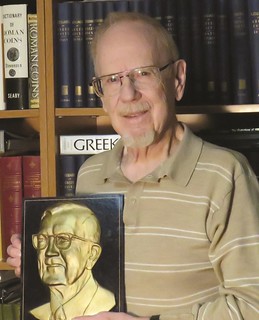 Traditional Biblical archaeology generally involves the study and history of Jewish and Christian peoples as recorded in the Old and New Testament and related contemporary references, such as the works of historian Flavius Josephus and the Dead Sea scrolls. Classical archaeology includes a broader consideration of the ancient world, including the Mediterranean cultures of Greece, Rome, the Mycenaeans, and Minoans. Together, they explore the ever-fascinating world of antiquity.
Traditional Biblical archaeology generally involves the study and history of Jewish and Christian peoples as recorded in the Old and New Testament and related contemporary references, such as the works of historian Flavius Josephus and the Dead Sea scrolls. Classical archaeology includes a broader consideration of the ancient world, including the Mediterranean cultures of Greece, Rome, the Mycenaeans, and Minoans. Together, they explore the ever-fascinating world of antiquity.
The use of barter and trade items, as well as coins, after the eighth century B.C. was common to many cultures, and examples of such items still exist in museums and collections to confirm, and sometimes better explain, the authenticity of ancient history. Few resources are more detailed than the accounts found in sacred writings, and thus studying the Bible accounts of coins and money is a rewarding source of information and enjoyment for many coin enthusiasts. Most collectors refer to this special interest as Coins of the Bible,
or sometimes, Money of the Bible.
A typical example of how the study of coins can aid in establishing the validity of their use in ancient times can be found in the account of the coin found in the fish's mouth (Matthew 17:24–27). This is the story of how Jesus told his disciple Peter to cast a line into the water and retrieve a fish that would contain a coin sufficient in value to pay the required temple tax for both of them.
The customary tax was used for temple repairs and other religious purposes, and it was required to be paid by all Jews wherever they lived throughout the ancient world. The annual tax was one-half shekel for every man over the age of 20 (Exodus 30:13–15).
The exact value, timing, and place of this event establishes precisely the kind of coin that must have been involved. By Jewish convention, it distinctly had to be a tetradrachm, called a shekel, from the neighboring city of Tyre. Such coins are still extant today and are regularly seen in museum exhibits, collections, and the coin trade.
In Bible Lore and the Eternal Flame, in my discussion of this and similar events, there is no attempt to confirm or dispute any of the religious writings or teachings recorded in Bible passages. For many readers, these are a matter of faith or interpretation. Evidence can be provided by coins and other artifacts to establish certain facts, but these are not especially helpful for confirming traditional stories, parables, or beliefs that have been passed down through generations of faithful believers, until being recorded by learned people sometimes centuries after the actual events. Knowing that genuine artifacts still exist provides a gateway to strengthening one's faith and provides a tangible connection to the past that can only be experienced through studying or actually seeing some of these interesting items. They are the closest thing to time travel
that one can ever experience.
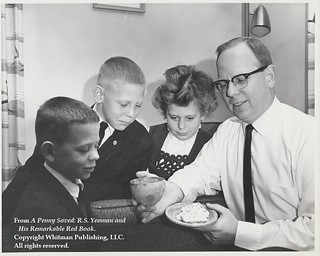 When my family was young, in the early 1960s, I sought to demonstrate the use of ancient artifacts by showing how people lived in biblical times. A favorite discussion centered on the traditional Seder meal, and the similar Last Supper of Jesus. That always brought up the subject of the elusive Holy Grail, and its meaning. To establish that ordinary drinking cups and plates were used then as now, I showed my children examples of terracotta pieces that were used by common people at that time and place.
When my family was young, in the early 1960s, I sought to demonstrate the use of ancient artifacts by showing how people lived in biblical times. A favorite discussion centered on the traditional Seder meal, and the similar Last Supper of Jesus. That always brought up the subject of the elusive Holy Grail, and its meaning. To establish that ordinary drinking cups and plates were used then as now, I showed my children examples of terracotta pieces that were used by common people at that time and place.
Stories about the cup are omnipresent, as are numerous assertions about which is the original. Logically, the claims cannot all be true. Yet, it is possible to imagine the Grail based on the types of pottery and drinking vessels common at that precise time, place, and culture, giving us a fuller understanding of what everyday life was like centuries in the past.
There is no lack of information about such things. Learning about the past and people who lived centuries ago gives us a closer appreciation of how their efforts have impacted our lives. Hopefully, Bible Lore's brief glimpse of my personal interest in numismatics and archaeology will inspire you to dig deeper into the things you find of interest in world history, the daily lives of people past, and the Bible.
Bible Lore and the Eternal Flame.
By Kenneth Bressett; foreword by David Hendin.
ISBN 0794849768. Hardcover, 6 x 9 inches, 224 pages, full color.
Retail $24.95 U.S.
https://whitman.com/bible-lore-and-the-eternal-flame/
To read the earlier E-Sylum article, see:
NEW BOOK: BIBLE LORE AND THE ETERNAL FLAME
(https://www.coinbooks.org/v25/esylum_v25n05a03.html)
WOMEN'S RELIEF CORPS AT CIVIL WAR SHOWCASE
To study coins and medals from more recent history, consider visiting the Civil War Money & Memorabilia Showcase™ at next month's PAN show near Pittsburgh. -Editor
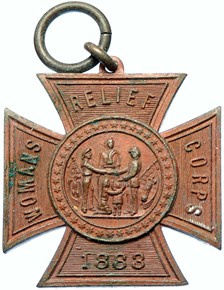 The Inaugural Civil War Money & Memorabilia Showcase™ welcomes
The Woman's Relief Corps.
The Inaugural Civil War Money & Memorabilia Showcase™ welcomes
The Woman's Relief Corps.
The nationally chartered Auxiliary of the Grand Army of the Republic (GAR) served Union Veterans, their Families and Caregivers for Generations….. At their National Museum in Springfield, IL, they are Curators of Civil War Currency, Medals and Memorabilia.
A Special Ten Minute Talk by Rebecca Rush, National Board member of the Women's Relief Corps (WRC), will be announced for Friday and Saturday at the Pennsylvania Association of Numismatists (PAN) Coin Show May 19-21, 2022.
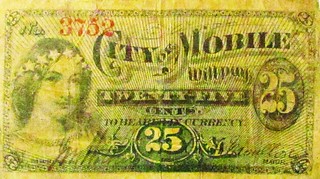 The Civil War Showcase is pleased to announce that the Women's Relief Corps (WRC) will be participating in the upcoming PAN Coin Show May 19-to-May 21. The WRC maintains a Museum in Springfield, IL, which is home to a wide collection of Civil War and GAR related memorabilia – including, surprisingly, Confederate and Southern States currency, which no doubt came home as souvenirs of the War.
The Civil War Showcase is pleased to announce that the Women's Relief Corps (WRC) will be participating in the upcoming PAN Coin Show May 19-to-May 21. The WRC maintains a Museum in Springfield, IL, which is home to a wide collection of Civil War and GAR related memorabilia – including, surprisingly, Confederate and Southern States currency, which no doubt came home as souvenirs of the War.
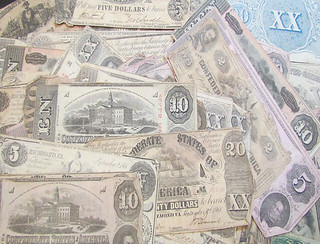
It is amazing what treasures reside in small museums – like in Washington County, Maryland, too. Confederate currency made its way to the northern states both as battles were fought or as Union soldiers returned home with souvenirs of Southern money,
said Becky Rush, one of the CW Showcase organizers. We are working with the WRC on a poster-display of currency, medals and other memorabilia that will blend well with the other displays dealing with the Women's Relief activities and Sanitary Fairs. Richard Crosby (PAN) is going to be one of the exhibitors and has an extensive collection of badges and medals from those successful Union fundraising fairs.
Ms. Rush will be giving a couple of Talks in Ten
about the Women's Relief Corps and the Sanitary Fairs on Friday and Saturday, times will be announced before the PAN Coin Show.
For further information, check in on our website: https://no-small-change.org (a 501-c-3 non-profit organization)
Email: cwshowcase@no-small-change.org
NOTES FROM E-SYLUM READERS: APRIL 10, 2022
Remembering David Gotkin
Ed Cohen writes:
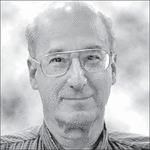 "I grew up with David in Washington, DC. We lived in the same apartment building. I started him in coin collecting in the late 1950s. I never forgave him for getting in change my most coveted coins. From his father's work receipts, he found a 1909-S Indian cent. Within a month, he received at a neighborhood bazaar from one of my non-collecting friends a 1909-S VDB Lincoln cent.
"I grew up with David in Washington, DC. We lived in the same apartment building. I started him in coin collecting in the late 1950s. I never forgave him for getting in change my most coveted coins. From his father's work receipts, he found a 1909-S Indian cent. Within a month, he received at a neighborhood bazaar from one of my non-collecting friends a 1909-S VDB Lincoln cent.
"David would become a telephone technician and deal coins on the side. Eventually he sold the two coins that I deserved to find and became a full-time dealer. Every year when I visited his table, we started off with my unforgiving jealousy for his childhood luck. The conversations quickly turned to updates on our families. I was close with Dave's mom Ellie, who always treated me well when I visited from the first floor to the third. An avid bowler until her middle nineties, Ellie died at 100 several months before Dave."
Great memories - thanks. -Editor
To read the earlier E-Sylum articles, see:
DAVID R. GOTKIN (1944-2022)
(https://www.coinbooks.org/v25/esylum_v25n13a11.html)
NOTES FROM E-SYLUM READERS: APRIL 3, 2022 : More on Dealer David Gotkin
(https://www.coinbooks.org/v25/esylum_v25n14a08.html)
More on the M. N. DAYCIUS Prank
"When I first read the article based on Sam E. Coudin's investigation of the M. N. DAYCIUS Prank, I immediately suspected another prank. A Google search didn't turn up any reference to that name. I'm not a genetic scientist, but DNA on a stamp that old seems a bit far fetched. Even if possible, who would damage a piece of numismatic history and spend the money to remove and have the stamps tested? Especially someone with a phony sounding name who doesn't seem to want to be identified?
"Sam E. could certainly be "Same". All I could find about Coudin is it may be linguistically related to "cousin". Same cousin? Could this be the original hoaxster taking a second bite at the apple? I anxiously awaited this week's E-Sylum to see the mystery solved by the many E-Sylum sleuths, but alas no one has called out "Mr. Coudin", but Pete Smith has demonstrated that he doesn't want to be identified. Can anyone actually confirm that he is a real person or is someone taking us for a ride?"
I asked, "What names can be made from the letters of "mendacious" ?" -Editor
Harold writes:
"Wayne Homren, you are the devil himself! 'Mendacious' rearranged is Sam E. Coudin! Perhaps you are the mendacious hoaxer from years ago who now wishes to confess his sins?"
No confession here. I was nearly taken in myself. Luckily I figured it out and had a good laugh before buying a plane ticket. Credit Len Augsburger with the 2022 'mendacious' name jumble.
A number of numismatic literature luminaries have passed from the scene since 1992. I've not gotten wind of any deathbed confessions and have a suspicion the culprit still walks among us. But while I'm glad DNA evidence unmasked the Golden State Killer, some lesser mysteries are best left unsolved. -Editor
To read the earlier E-Sylum article, see:
NUMISMATICS MEETS MODERN FORENSICS
(https://www.coinbooks.org/v25/esylum_v25n13a02.html)
MORE ON THE 1992 M. N. DAYCIUS PRANK
(https://www.coinbooks.org/v25/esylum_v25n14a07.html)
More on Cowrie Shell Money
An E-Sylum advertiser writes:
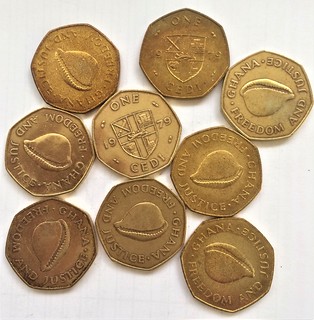 "As I was about to leave for the ANA in Colorado Springs, I got wind of what turned out to be a magnificent accumulation from an old world collector. So, I missed Ted Puls' talk 'The World's First Money, or My Money is Older than Your Money'.
"As I was about to leave for the ANA in Colorado Springs, I got wind of what turned out to be a magnificent accumulation from an old world collector. So, I missed Ted Puls' talk 'The World's First Money, or My Money is Older than Your Money'.
"But a representation of this money was featured in one of our past 'Numismatic Wholesale' Esylum ads.....The Money Cowrie (Cyprea moneta) on a Ghanaian 1 Cedi Coin of 1979."
Cool - money pictured on money. Thanks. -Editor
To read the earlier E-Sylum article, see:
THE WORLD'S FIRST MONEY: COWRIE SHELLS
(https://www.coinbooks.org/v25/esylum_v25n13a22.html)
The Red Book Index Gremlins Strike!
Tom Sheehan writes:
"At the PNNA (Pacific Northwest Numismatic Association) annual show, I bought the latest Red Book, spiral bound and wanted to check out the Libertas Americana medal. The index directed me to page 87. NOTHING. Went back to see if the regular hard bound edition listed it. Again NOTHING.
"Is this a rarity that will increase in value?"
I passed Tom's question on to Red Book Senior Editor Jeff Garrett and Publisher Dennis Tucker of Whitman Publishing. Dennis' response is below. Thanks. -Editor
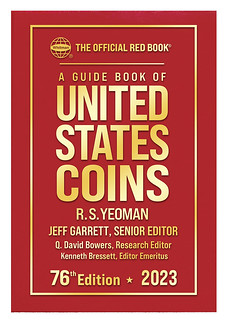 We've removed the Libertas Americana medal from the 76th edition of the Red Book. As for its loitering presence in the index? That's the numismatic-publishing equivalent of the gremlins that used to make mischief in Royal Air Force machinery!
We've removed the Libertas Americana medal from the 76th edition of the Red Book. As for its loitering presence in the index? That's the numismatic-publishing equivalent of the gremlins that used to make mischief in Royal Air Force machinery!
Here's some background on the Libertas Americana medal and the Red Book:
We introduced the medal in the 2008 (61st) edition, published in 2007.
We gave it the approximate half-page of space previously granted to A Sketch of Coin Collecting in America,
which itself was introduced in the extensive redesign of the 2006 (59th) edition, published in 2005. That essay served as a kind of entry-ramp from the colonial
(pre-federal) issues to the regular federal issues that make up the bulk of the book.
This year we decided that, with last year's publication of the 75th edition, the Libertas Americana medal has had a good long run, appearing in 15 editions of the Red Book. We redistributed its half-page of space to beef up the Contract Issues and Patterns
section with additional information (in particular, giving a bit more narrative text to the 1792 proposed coinage).
If Mr. Sheehan sends me his mailing address, he'll get a rare and delightful prize for being a keen-eyed (and fast!) Red Book reader.
To read an earlier E-Sylum article, see:
NEW BOOK: GUIDE BOOK OF U.S. COINS, 76TH EDITION
(https://www.coinbooks.org/v25/esylum_v25n09a03.html)
Warhol: When Numismatics Meets Art
Inspired by last week's image of Andy Warhol's dollar sign work,
Tom Uram writes:
"I thought readers might like to see my newest exhibit, titled 'When Numismatics Meets Art'. I actually have the two dollar bill signed. Just thought it would be a fun project. How can you take a two dollar bill with a stamp on it, and really make it worth significantly more?"
Thanks! I'll look forward to seeing the exhibit in person. -Editor
To read the earlier E-Sylum article, see:
Andy Warhol's $ : Andy Warhol's $
(https://www.coinbooks.org/v25/esylum_v25n14a22.html)
Fugio Cent on Philadelphia Bank Building
On Facebook Andrew Pollock shared this image form the Wells Fargo Building (the old First National Bank Building) at the intersection of Sansom and Broad in Philadelphia. Nice! -Editor
To read the full post on Facebook, see:
https://www.facebook.com/photo.php?fbid=5670002876348139&set=a.501888213159657&type=3
KENNEDY HALF DOLLAR DESIGN PROPOSAL
Wayne Pearson submitted these thoughts on a new design for the Kennedy half dollar. -Editor
Once upon a time the half dollar coin circulated as everyday commerce.
Not so much anymore.
I remember going to a Pizza King in 1968, when I was eight. My parents gave me the money and sent me inside to pick up our pizza.
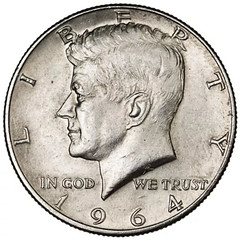 I was second in line behind a man who was already receiving his change-which included a half dollar coin. He became enraged, saying,
I was second in line behind a man who was already receiving his change-which included a half dollar coin. He became enraged, saying, I don't want this damn thing,
as he threw it down on the counter. The half dollar began titter-tottering from side to side, making a ringing sound.
The man then looked to me, and then back to the woman working the counter, explaining that it didn't fit in vending machines.
Sodas were a dime at that time.
Now, fifty-four years later, sodas are at least fifty cents, yet vending machines still don't take half dollar coins.
Why?
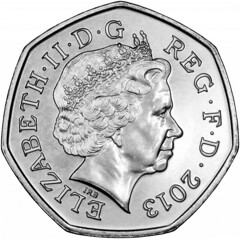 If it is the size, we could reduce the 30.6 mm size to 27.3 mm like the 50 pence coin in Great Britain.
If it is the size, we could reduce the 30.6 mm size to 27.3 mm like the 50 pence coin in Great Britain.
The equilateral curved heptagon shape allows the 50 pence coin to roll.
And with a new shape we would not encounter the confusion we had with the smaller Susan B. Anthony dollar coin.
Our current John F. Kennedy half dollar, beginning in 1964, is now 58 years old. That is longer than Kennedy lived-dying at 46.
With our semiquincentennial afoot, in 2026, it is finally time for a new Kennedy design.
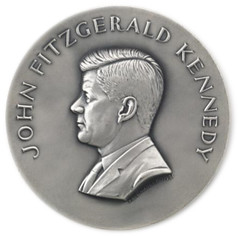 Combining the heptagon idea and a new Kennedy design, here are two examples of half dollar coin using the Kennedy design from the 1961 Paul Manship inaugural medal.
Combining the heptagon idea and a new Kennedy design, here are two examples of half dollar coin using the Kennedy design from the 1961 Paul Manship inaugural medal.
REFERENCES:
https://coin-brothers.com/catalog/coin3455
https://www.jmbullion.com/90-silver-kennedy-half-dollars-10-roll-1964-p-d/
John Fitzgerald Kennedy Inaugural Medal
(https://americanart.si.edu/artwork/john-fitzgerald-kennedy-inaugural-medal-87041)
VOCABULARY TERM: IMPRESSED ERROR
Here's another entry from Dick Johnson's Encyclopedia of Coin and Medal Terminology. -Editor
Impressed Error. A striking error in which foreign matter is lodged on and impressed into the surface of a struck piece. The foreign matter comes between the die and the blank before striking; and after striking it is retained below the surface but later may or may not flake off or dislodge. Thus an unusual shaped depression on a struck surface may be evidence that some object had indeed lodged there during striking. As a collector's item it is far more interesting if the impressed object is still intact.
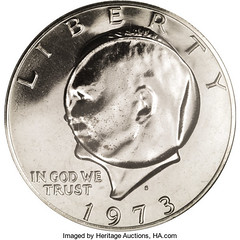 A wide variety of foreign objects have been found impressed on coins and medals including metal scrap of all kinds, wire, staples, diechips, bits and pieces of planchets, other struck pieces, small parts of tooling, and even blanks and struck pieces of smaller diameter. An area containing a letter or detail flaking off one piece (mostly because of a lamination error) falling on a blank and impressed into a second struck piece is called a dropped letter.
A wide variety of foreign objects have been found impressed on coins and medals including metal scrap of all kinds, wire, staples, diechips, bits and pieces of planchets, other struck pieces, small parts of tooling, and even blanks and struck pieces of smaller diameter. An area containing a letter or detail flaking off one piece (mostly because of a lamination error) falling on a blank and impressed into a second struck piece is called a dropped letter.
Metal shards from any source landing on a blank can be impressed into a coin; more often than not these tiny shards are not retained but fly off. This condition was once called lint marks but this term is a misnomer. A more accurate term for this anomaly is impressed shard mark. Cloth and other nonmetallic items have also been impressed as well as grease which forms wavy areas (rippled surface).
In presswork, impressed errors are eliminated for the most part by blowing compressed air over both dies and blank prior to striking. Collectors' terms for this anomaly is struck-thru and indents, the latter for a blank or struck piece impressed on a piece of larger size. When an object is purposely placed on the surface of the planchet and struck this is called impressed design (see previous entry).
References:
NM19 {1991} Margolis (indents) p 265-270.
To read the complete entry on the Newman Numismatic Portal, see:
Impressed Error
(https://nnp.wustl.edu/library/dictionarydetail/516130)
To read the earlier E-Sylum article, see:
BONDED, MATED AND RETAINED ERRORS
(https://www.coinbooks.org/v23/esylum_v23n10a14.html)
NUMISMAGRAM MEDAL SELECTIONS: APRIL 2022
Numismagram's Jeremy Bostwick forwarded along these three medals from his recent April upload of new medals to his website. For all of these new items, please visit numismagram.com/inventory. -Editor
101921 | UNITED STATES & GERMANY. Hamburg America Line silver Award Medal. Engraved 1928 and presented to Max Meisner for 25 years of service (37mm, 20.16 g, 12h). By J. Lanca. Personifications of navigation (female and resting hand upon anchor) and commerce (male and holding caduceus over shoulder) standing to left and right of altar bearing both halves of the globe unified by ribbon reading MEIR FELD IST DER WELT (my field is the world) and set upon base reading IM ZEICHEN / DES VERKEHRS (dedicated to shipping); in background, two ships upon the sea / Cartouche with inscription "MAX MEISNER 1903–1928"; legend reading IN ANERKENNUNG / TREUER DIENSTE / HAMBURG– / AMERIKA– / LINIE in five lines; company logo and oak branch curling to left. Edge: HM. SILBER 990; loop attached at the top. Choice Mint State. Attractively toned, with some rose-gold highlights in the reverse field. $175.
The Hamburg-Amerikanische Packetfahrt-Aktien-Gesellschaft (HAPAG) was a transatlantic shipping enterprise that was based in Hamburg, Germany and routinely serviced ports in America, establishing a close connection between the two nations. It eventually became one of the world's largest shipping operations, and served the growing number of German immigrants in the United States. It ceased as an entity in its own right with its merger with North German Lloyd in 1970.
A busy design, but an interesting medal nonetheless. -Editor
To read the complete item description, see:
101921 | UNITED STATES & GERMANY. Hamburg America Line silver Award Medal.
(https://www.numismagram.com/product-page/101921)
102022 | GERMANY. Paul Ehrlich bronze Medal. Issued 1910. Commemorating the 56th birthday of the Nobel Prize recipient and breakthrough researcher on the treatment of syphilis (60mm, 98.40 g, 12h). By K. Goetz. PAVL • EHRLICH • ÆTATIS • ANNO • LVI • MCMX, bust right in frock coat / Nude Asclepius standing left, holding staff and feeding serpent from patera; CORPORA / NON / AGVNT - NISI FIXATA (Ehrlich's maxim: a drug will not work unless it is bound) across field. Edge: Plain. Kienast 43. Gem Mint State. Glossy brown surfaces, with a very slight matte nature. Quite rare, especially this attractive and alluring. $495.
Paul Ehrlich was an important German physician and scientist who contributed greatly to the field of immunology. Awarded the Nobel Prize in Physiology/Medicine in 1908 for the standardization of manufacturing anti-diphtheria serum, he actually garnered even more fame through a discovery with fellow researcher, Sahachiro Hata from Japan. This breakthrough involved arsphenamine (also known as Salvarsan or compound 606) and was the first effective treatment for syphilis. This incredibly important treatment further led to Ehrlich's concept of the "magic bullet" (i.e., the idea that it would be possible to kill a bacteria or disease within one's body by using a targeted treatment without harming the body itself), and also served as the foundation to the concept of chemotherapy. The contributions of Ehrlich and Sata cannot be understated, especially when considering the importance of public health and the medical researchers tasked with maintaining it.
An important medical medal. Great surfaces. -Editor
To read the complete item description, see:
102022 | GERMANY. Paul Ehrlich bronze Medal.
(https://www.numismagram.com/product-page/102022)
101967 | UNITED STATES & SWEDEN. Gustaf V/Centennial of Swedish Pioneers in America silver Medal. Issued 1948 (38mm, 32.59 g, 12h). By L. Holmgren at the Stockholm mint. GUSTAVUS • V REX • SVECIÆ, head left; crown above / View of the globe highlighting outline of the eastern half of North America (reading AMERIKA) and the Scandinavian peninsula (reading SVERIGE); clouds above and below, with polar star, five geese flying westward, and six line legend: TILL MINNE AV / DE SVENSKA PIONJÄRERNA / TO THE COMMEMORATION / OF THE SWEDISH / PIONEERS / 1848–1948. Edge: MV SILVER 1948; includes clasp and ribbon. Rulau –. Mint State details. Deep gunmetal gray surfaces, with a few subtle abrasions accounting for the designation. $395.
The seemingly endless opportunities present in the vast and expanding American midwest caused waves of Swedish pioneers to emigrate from Sweden around and shortly after 1848. Areas of Minnesota, Illinois, Wisconsin, Iowa, and Michigan, in particular, saw a great deal of Swedish immigration, with that Scandinavian history present to this day. In commemoration of the centennial of this first wave of pioneers, this award medal was issued, paralleling the celebrations from a decade prior for Sweden's colonial foothold in and around what is now Delaware.
A nice medal. My own heritage is part Swedish. -Editor
To read the complete item description, see:
101967 | UNITED STATES & SWEDEN. Centennial of Swedish Pioneers silver Medal.
(https://www.numismagram.com/product-page/101967)
DIX NOONAN WEBB APRIL 12, 2022 SALE
Here's the announcement for the Dix Noonan Webb April 12, 2022 sale. -Editor
Mayfair-based Auctioneers Dix Noonan Webb, who specialise in coins, medals, banknotes and jewellery will be holding an auction of British and World Coins, and Historical Medals on Tuesday, April 12, 2022 at 10am. The 770-lot sale will feature coins and medals dating from the first millennium BC to the present day and from as far afield as Thailand and Korea.
Over 100 lots from the Michael Gietzelt Collection of Coins, tokens and medals of the Isle of Man and the Channel Islands will be offered. A notable example is a very rare and very fine copper pattern penny from the Isle of Man, dating from 1723. This penny was originally in H.A. Parsons Collection which sold in 1954 and is estimated at £4,000-5,000.
The sale will also include English Hammered coins from various properties. From the Early Anglo-Saxon Period is an extremely fine Gold Shilling or Thrymsa that dates from circa 645-70 and was found near Horsmonden (Kent) in around 1955. Decorated with two Emperors on one side and winged Victory above two figures on the other, it is estimated at £3,000-3,600.
Among the British milled coins are two interesting coins from private collections. A Proof crown from the reign of George IV (1820-1830) that dates from 1826 is expected to fetch £10,000-12,000, while an extremely rare Proof Sovereign from the reign of Queen Victoria (1837-1901), dating from 1871 carries an estimate of £8,000-10,000.
Two World coins that were once in the D.L.F. Sealy Collection include from Korea, a very rare 5 Chon, dating from yr 3 of the reign of Yung Hi [1909] which is estimated at £10,000-12,000. While from Thailand: a rare and fragile 19th century Pattern 2 Baht from the reign of Rama V (1868-1910). Struck in white metal, this extremely fine example is expected to fetch £6,000-8,000.
For more information, see:
https://www.dnw.co.uk/
STEPHEN ALBUM INTERNET AUCTION 15
Here's the announcement for the April 11, 2022 Internet Auction 15 sale from Stephen Album Rare Coins. -Editor
Stephen Album Rare Coins will hold its Internet Auction 15 at its offices in Santa Rosa, California on April 11, 2022. Internet pre-bidding has begun and can be accessed through their website. The auction is made up of an even 600 lots from many categories, including 400 world lots, 173 of which are choice pieces from The Joe Sedillot Collection, over 100 Chinese coin lots, including many better varieties, and 60 lots of Indian coins, including many high-grade British India coins. Estimates range from $30 to $250. Sample lots from the sale follow:
LOT 4: WORLD: ANGUILLA: AR Liberty dollar, 1967, Bruce-X1, countermark on 1953 Mexico 5 pesos (KM-467), toned, PCGS graded MS61. Estimated at $100 to $150
LOT 140: WORLD: SAXE-HILDBURGHAUSEN: Ernst Friedrich Karl, 1745-1780, AE heller, 1763, KM-83, Hollmann-110, Merseburger-3579, a wonderful mostly red lustrous mint state example! PCGS graded MS64 RB. Estimated at $150 to $250
LOT 222: WORLD: LOMBARDY-VENETIA: Franz Joseph I, 1848-1866, AE soldo, 1862-A, Cr-35, a superb quality example with traces of red lustrous within lustrous fields! PCGS graded MS65 BN. Estimated at $150 to $200
LOT 433: WORLD: YEMEN: Yahya b. Muhammad, 1904-1948, AR riyal, San'a, AH1344, Y-7, a fantastic quality example! PCGS graded MS66. Estimated at $150 to $200
LOT 451: CHINA: Republic, AR dollar, year 23 (1934), Y-345, L&M-110, Sun Yat-sen, Chinese junk under sail, PCGS graded AU58. Estimated at $125 to $175
LOT 591: INDIA: BRITISH INDIA: George V, 1910-1936, AR rupee, 1921(b), KM-524, S&W-8.54, scarce date, PCGS graded MS64. Estimated at $125 to $175
The firm is now taking consignments for future internet and premier sales.
More information can be found on their website at www.stevealbum.com .
NUMISMATIC NUGGETS: APRIL 10, 2022
Here's a selection of interesting or unusual items I came across in the marketplace this week. Tell us what you think of some of these. -Editor
Trajan AV Aureus. Rome, AD 111. IMP TRAIANO AVG GER DAC P M TR P COS V DES VI, laureate, draped and cuirassed bust to right / S P Q R OPTIMO PRINCIPI, Emperor standing to left, extending hand to two children, standing to right; ALIM ITAL in exergue. RIC II 230 corr. (also cuirassed); C. 16; BMCRE pg. 88, *; Woytek 376f (same dies); Calicó 985 corr. (same - same dies); Künker 168, lot 7735 (same dies). 7.19g, 19mm, 7h.
Very Fine; lustrous metal. Exceptionally Rare; seemingly one of just seven known specimens, only two other examples on CoinArchives and the first to come to auction since 2010.
From a private European collection.
A nice coin from the Roma Numismatics E-Sale 95. -Editor
To read the complete lot description, see:
Trajan AV Aureus.
(https://www.romanumismatics.com/259-lot-985-trajan-av-aureus)
Lot 270. France, Carolngian. Charlemagne (Charles the Great). As Charles I, King of the Franks, A.D. 768-814. AR denier. Class 3. Mediolanum (Milan) mint, Struck 793/4-812. Ex CNG Triton 18, 1383; Ex Joseph R. Lasser Collection.
France, Carolngian. Charlemagne (Charles the Great). As Charles I, King of the Franks, A.D. 768-814. AR denier (21 mm, 1.47 g, 10 h). Class 3. Mediolanum (Milan) mint, Struck 793/4-812. + CARLVS REX FR, cross pattée / + MEDIOL, Carolus monogram. Coupland, Charlemagne 16; Depeyrot 662F; M&G 212; MEC 1, 743. Good VF, find patina.
Ex CNG Triton 18, 1383; Ex Joseph R. Lasser Collection.
Nice coin. From the Agora Auctions sale #105 closing April 19, 2022. -Editor
To read the complete lot description, see:
Lot 270. France, Carolngian. Charlemagne (Charles the Great).
(https://agoraauctions.com/listing/viewdetail/54066)
Important Confederate States Civil War Native American Indian bronze medal, dated 22 February 1862, the front impressed with the Seal of the Confederate States, with central relief image of an equestrian statue of George Washington in Capitol Square in Richmond, Virginia, with motto Deo Vindice, the verso inscribed The Congress of the C. S. A. to Stand Waite, Chief of the Cherokee, 3 1/4" dia. Stand Waite was a Cherokee politician who served as the second principal chief of the Cherokee Nation from 1862 to 1866, he was the only Native American Confederate general officer of the war and was the last Confederate States Army general to surrender.
Auctioneers Pook & Pook Inc. of Downingtown, PA are offering this medal in an April 21, 2022 sale. I've seen nothing like it before. If genuine, some conservation may be in order. -Editor
To read the complete lot description, see:
Native American Indian bronze medal
(https://www.bidsquare.com/online-auctions/pook/native-american-indian-bronze-medal-2842344)
1891-O MORGAN SILVER DOLLAR $1 TOKEN "68" OR "89" OPTICAL ILLUSION STRIPES
A very unusual piece. Has anyone seen anything like this before? What's going on? -Editor
To read the complete lot description, see:
1891-O MORGAN SILVER DOLLAR $1 TOKEN "68" OR "89" OPTICAL ILLUSION STRIPES
(https://www.barnebys.com/auctions/lot/1891-o-morgan-silver-dollar-1-token-68-or-89-optical-illusion-stripes-hzDd0HfEx)
Elizabeth II, 50 Pence (Libraries) 2000 Silver Proof
I somehow missed this coin design when it first came out. Perfect for numismatic bibliophiles! From the Coincraft website. -Editor
To read the complete lot description, see:
Elizabeth II, 50 Pence (Libraries) 2000 Silver Proof
(https://coincraft.com/elizabeth-ii-50-pence-libraries-2000-silver-proof-2)
STUDY EXAMINES DEBASEMENT OF ROMAN DENARII
David Pickup passed along an article about a University of Warwick analysis of Roman coins. Thanks. -Editor
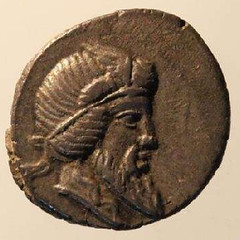 New scientific analysis of the composition of Roman denarii has brought fresh understanding to a financial crisis briefly mentioned by the Roman statesman and writer Marcus Tullius Cicero in his essay on moral leadership, De Officiis, and solved a longstanding historical debate.
New scientific analysis of the composition of Roman denarii has brought fresh understanding to a financial crisis briefly mentioned by the Roman statesman and writer Marcus Tullius Cicero in his essay on moral leadership, De Officiis, and solved a longstanding historical debate.
Researchers at the University of Warwick and the University of Liverpool have analyzed coins of the period and revealed a debasement of the currency far greater than historians had thought, with coins that had been pure silver before 90BC cut with up to 10 percent copper five years later.
Dr. Ponting at the University of Liverpool said: "The Romans had been used to an extremely fine silver coinage, so they may well have lost confidence in the denarius when it ceased to be pure. The precise level of debasement might have been less important to contemporaries than the mere realization that the coin was adulterated and no longer made of true 'silver.'"
Professor Butcher at the University of Warwick said "The discovery of this significant decrease in the value of the denarius has shed new light on Cicero's hints of a currency crisis in 86BC. Historians have long debated what the statesman and scholar meant when he wrote 'the coinage was being tossed around, so that no one was able to know what he had.' (De Officiis, 3:80) and we believe we have now solved this puzzle."
The reference is part of an anecdote describing self-serving behavior by Marius Gratidianus, who took credit for a proposal for currency reform worked out jointly by the tribunes and the college of praetors and became hugely popular with the public as a result.
To read the complete article, see:
Analysis of Roman coins uncovers evidence of financial crisis
(https://phys.org/news/2022-04-analysis-roman-coins-uncovers-evidence.html)
COINS OF MEDIEVAL SERBIA
A recent Coinweek article by Mike Markowitz examines the coins of medieval Serbia. Here's an excerpt - be sure to see the complete article online for more. -Editor
 THE SLAVS BEGAN migrating into southeastern Europe during the chaotic sixth century, interacting – sometimes as adversaries, sometimes as subjects or allies – with the Eastern Roman (
THE SLAVS BEGAN migrating into southeastern Europe during the chaotic sixth century, interacting – sometimes as adversaries, sometimes as subjects or allies – with the Eastern Roman (Byzantine
) Empire. By the time of Prince Mutimir (ruled c. 850-891), many Serbs had converted to Orthodox Christianity. In 1219, under the leadership of Archbishop St. Sava, the Serbian Orthodox Church became independent from Constantinople.
Stefan Uroš I
SERBIA. Stefan Uros I, king, 1243-1276. Gros (Silver, 20 mm, 1.71 g, 6 h). VROSIVS REX S STEFAN' Stefan Uroš standing facing on the left, holding akakia in his left hand, and St. Stefan, nimbate, standing facing on the right, holding book of Gospels in his left hand; both holding, between them with their right hands, long banner. Rev. Christ, nimbate, seated facing on decorated throne and holding book of Gospels with both hands; in field to left and right, IC – XC. Dimitrijevic 5. Light areas of weakness, otherwise, very fine. Starting Price: 25 CHF. Leu Numismatik AG > Web Auction 16. 22 May 2021. Lot: 4841. Realized: 55 CHF (approx. $61).
Born about 1223, Stefan Uroš I is remembered as Uroš Veliki (Urosh the Great
). He was the youngest son of Stefan the First-Crowned. His mother Anna was the daughter of the Venetian doge (duke
) Enrico Dandolo, who led the Fourth Crusade that sacked Constantinople in 1204. Stefan Uroš won his throne in 1243 by defeating his half-brother Vladislav in a civil war. He married Helen of Anjou, a French noblewoman later canonized as St. Jelena by the Serbian Orthodox Church.
An energetic ruler, Uroš encouraged mining in the kingdom, importing skilled Saxon mine workers from the gold mines of the Carpathian Mountains. He reformed the coinage, with a massive issue of silver coins modeled on the high-quality Venetian grosso that was gaining wide acceptance as an international trade currency. In numismatic references, the terms gros and dinar are both used for these coins. On the coin, Stefan stands beside his namesake St. Stephen, patron of his Nemanjic dynasty. The Latin inscription identifies him as UROSIUS REX (King Urosh
). Two sons of Uroš succeeded him in turn.
To read the complete article, see:
Coins of Medieval Serbia
(https://coinweek.com/world-coins/the-coins-of-medieval-serbia/)
FIRST COINS STRUCK FROM CALIFORNIA GOLD
Douglas Nyholm published a nice article in the Utah Numismatic Society Mint Master for April 2022 about the first three coins made from California gold. With permission, we're republishing it here. Thanks! -Editor
Unofficially the 1848 CAL Quarter Eagle gold coin was the first commemorative coin issued by the U.S. Mint. Obviously this coin came about due to the discovery of gold in California in 1848. On January 24, 1848 James Marshall, while working at Sutter's Mill on the American River spotted gold flakes in the streambed. From there the rest is history.
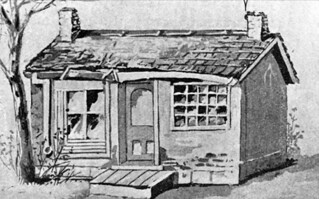 It was soon after that that the gold rush began and coinage was struck from California
gold. The Mormons were actually the first to strike a gold coin from California gold
which was brought back to Salt Lake City from returning Mormon Battalion members.
The first deposit of gold in Salt Lake City was on November 23, 1848 by Ebenezer
Brown, a Battalion member. It was on December 12, 1848 that the first $10 Mormon
gold coins were struck. These initial coins bore the date of 1849. This was less than a
year since the discovery at Sutter's Mill.
It was soon after that that the gold rush began and coinage was struck from California
gold. The Mormons were actually the first to strike a gold coin from California gold
which was brought back to Salt Lake City from returning Mormon Battalion members.
The first deposit of gold in Salt Lake City was on November 23, 1848 by Ebenezer
Brown, a Battalion member. It was on December 12, 1848 that the first $10 Mormon
gold coins were struck. These initial coins bore the date of 1849. This was less than a
year since the discovery at Sutter's Mill.
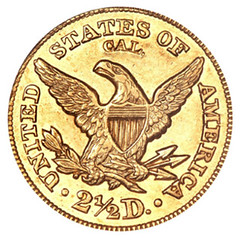 The next coin to be struck was the famous 1848 CAL Quarter Eagle struck a few days
later in December of 1848 with the counter-stamp CAL impressed on the reverse of the
coin. The exact date of its striking is not known but records note that some of these CAL
Quarter Eagles were available on January 5, 1849. The gold for these coins came from a
shipment of 228 ounces of California gold shipped by Col. R.B. Masson Jr. who at the
time was the acting Governor of California. The shipment left California on August 17th,
1848 and arrived in Philadelphia on December 8, 1848 which was confirmed by a letter
from the secretary of war, W.L. Marcy directed to mint director Patterson. As is the case
with raw gold bullion it was not ready for coining and had to be processed and coinage
most likely began soon after. Estimates of 1,389 pieces were struck from this gold. This
number is also an estimate based upon the weight of the original deposit.
The next coin to be struck was the famous 1848 CAL Quarter Eagle struck a few days
later in December of 1848 with the counter-stamp CAL impressed on the reverse of the
coin. The exact date of its striking is not known but records note that some of these CAL
Quarter Eagles were available on January 5, 1849. The gold for these coins came from a
shipment of 228 ounces of California gold shipped by Col. R.B. Masson Jr. who at the
time was the acting Governor of California. The shipment left California on August 17th,
1848 and arrived in Philadelphia on December 8, 1848 which was confirmed by a letter
from the secretary of war, W.L. Marcy directed to mint director Patterson. As is the case
with raw gold bullion it was not ready for coining and had to be processed and coinage
most likely began soon after. Estimates of 1,389 pieces were struck from this gold. This
number is also an estimate based upon the weight of the original deposit.
 The next interesting question was how were the letters CAL imparted into the coins
themselves? There are several theories, the most repeated one is that they were punched
into the coin while still in the die. This to me indicates it was accomplished before the
coin was ejected which doesn't seem possible. How could one set the punch then
hammer it while still in the press and die? Reading about multiple examples which have
been examined by experts, the CAL punch is virtually identical in position on all observed
coins. Also noted are several coins which show signs of double punching and was triple
punched. No coins show any flattening on the obverse lending credence to the other
theory that the punch was applied after the coin was struck but placed into a die with a jig
used to assure a standard position.
The next interesting question was how were the letters CAL imparted into the coins
themselves? There are several theories, the most repeated one is that they were punched
into the coin while still in the die. This to me indicates it was accomplished before the
coin was ejected which doesn't seem possible. How could one set the punch then
hammer it while still in the press and die? Reading about multiple examples which have
been examined by experts, the CAL punch is virtually identical in position on all observed
coins. Also noted are several coins which show signs of double punching and was triple
punched. No coins show any flattening on the obverse lending credence to the other
theory that the punch was applied after the coin was struck but placed into a die with a jig
used to assure a standard position.
There is no documentation that these CAL coins were ever sold at a premium but just
placed into circulation, or sold at face value to the few collectors at the time who had knowledge of their creation. Today it is estimated that about 200 survive and they are
actively collected by specialists. This coin is ranked as #70 in the current 5th edition of
the 100 Greatest U.S. Coins.
The third coin struck from California gold is that of the Norris, Gregg, & Norris, a $5 territorial coin. This coin preceded literally dozens of private mints which began operation prior to both the U.S. Assay office and later the San Francisco mint. Again, details are not known regarding the actual operation and initial striking but newspaper reports told that they were available as early as May in 1849.
These three coins were the first to be struck from California gold. One other interesting first is that of the first $20 denomination struck. This was also accomplished by the Mormons with their $20 Coin struck on December 22, 1849. This preceded the U.S. Mints striking of the first pattern 1849 Liberty Head Double Eagle by several days.
For more information on the Utah Numismatic Society, see:
https://www.facebook.com/UtahNumismaticSociety/
QUEEN WITHDRAWS FROM THE MAUNDY SERVICE
David Pickup passed along an article announcing that Queen Elizabeth II will not participate in this year's Royal Maundy service. First, some background. -Editor
From Wikipedia:
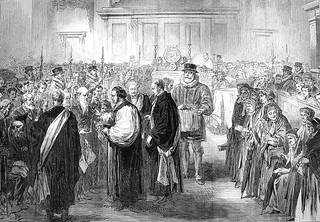 "Royal Maundy is a religious service in the Church of England held on Maundy Thursday, the day before Good Friday. At the service, the British monarch or a royal official ceremonially distributes small silver coins known as "Maundy money" (legally, "the Queen's Maundy money") as symbolic alms to elderly recipients. The coins are technically legal tender, but typically do not circulate due to their silver content and numismatic value. A small sum of ordinary money is also given in lieu of gifts of clothing and food that the sovereign once bestowed on Maundy recipients."
"Royal Maundy is a religious service in the Church of England held on Maundy Thursday, the day before Good Friday. At the service, the British monarch or a royal official ceremonially distributes small silver coins known as "Maundy money" (legally, "the Queen's Maundy money") as symbolic alms to elderly recipients. The coins are technically legal tender, but typically do not circulate due to their silver content and numismatic value. A small sum of ordinary money is also given in lieu of gifts of clothing and food that the sovereign once bestowed on Maundy recipients."
The announcement tonight that the Queen will not take part in this coming week's Maundy Thursday service is unprecedented. It has been a fixture in her religious calendar throughout her 70-year reign. Her place will be taken by Prince Charles.
While people assume that she is following in the footsteps of other royal monarchs, none of them was ever as assiduous as she has been in maintaining the tradition. It is a ritual that expresses her belief in what being a Christian monarch is about.
Medieval monarchs first practised the Maundy service ritual by washing the feet of the poor and giving alms to them. The first king recorded as doing so was John, who gave clothing, forks, food and other items to the poor in Yorkshire. Then in 1213, at a ceremony in Rochester, he gave 13 pence to 13 men, a number that was a reminder of Jesus and his 12 apostles.
Other monarchs followed, with Henry IV beginning the tradition that the number of pence given should reflect the monarch's age.
Some monarchs took the ceremony particularly seriously. Queen Mary I washed the feet of 41 women in 1556, the year of her 41st birthday, and also gave them 41 pence each plus other gifts of bread, fish, and clothes, including her own gown.
Later, court officials would wash the feet of the poor first before the monarch had to endure doing it. Charles II, after the Restoration, attended even during the plague years of 1661 and 1663.
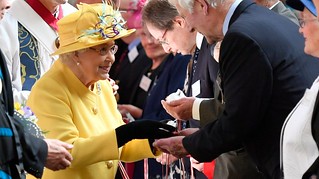 By the 20th century, members of the royal family would attend, particularly Princess Helena, Queen Victoria's third daughter, and her own daughter, Princess Marie Louise.
By the 20th century, members of the royal family would attend, particularly Princess Helena, Queen Victoria's third daughter, and her own daughter, Princess Marie Louise.
The current Queen began the habit of taking the service around the country to different cathedrals. The service, though, always follows a similar pattern, with two New Testament readings.
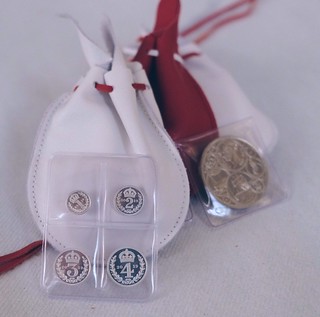 There are two gifts: a white leather bag containing special Maundy coins and a red leather one containing other money.
There are two gifts: a white leather bag containing special Maundy coins and a red leather one containing other money.
A man and a woman are chosen for each year of the Queen's age, and the money also represents the years she has lived. The recipients are usually people being recognised for their service to the community.
Six silver dishes are used to hold the gifts; one, the traditional Maundy Dish, forms part of the regalia used at coronations and is held at the Tower of London when not in use. All six dishes date from the reign of Charles II.
For the Queen, at 95, and with mobility issues, the Maundy service would certainly be taxing, standing for a considerable time as she distributes the gifts.
To read the complete article, see:
The Queen withdraws from the Maundy service, a ritual that became a pilgrimage
(https://religionmediacentre.org.uk/news/the-queen-withdraws-from-the-maundy-thursday-service-a-ritual-which-became-a-pilgrimage/)
To read an earlier E-Sylum article, see:
QUEEN ELIZABETH II DISTRIBUTES MAUNDY MONEY
(https://www.coinbooks.org/v22/esylum_v22n16a21.html)
COPPERHEADS BY MOYRA DAVEY
Nick Graver alerted me to this numismatic photomacrograph artwork currently on display at the Carnegie Museum of Art in Pittsburgh. Thanks! First, an overview of the exhibit. -Editor
Featuring works by 35 contemporary artists, Working Thought examines the role art can play in considering and questioning the many ways economic disparity and labor have shaped American life past and present.
Working Thought showcases artwork across media and generations, highlighting connections between diverse artistic practices. In this exhibition, a combination of new commissions and loans are presented alongside works from the museum's collection, positioning the collection in a new light and within the context of the history of Pittsburgh as a center of industry.
Here's more on the artist and artwork found elsewhere online. -Editor
Moyra Davey (born 1958) is an artist based in New York City. Davey works across photography, video, and writing.
Davey received a BFA from Concordia University in 1982 and a MFA from the University of California, San Diego in 1988. In 1989, she attended The Whitney Museum of American Art Independent Study Program.
Since the late 1970s, Davey has built a body of work composed of photographs, writings, and video. She was previously a faculty member at the Bard College International Center of Photography Program.
To read the complete article, see:
Moyra Davey
(https://en.wikipedia.org/wiki/Moyra_Davey)
In the early 1990s, not long after the stock market crash of 1987, she began collecting pennies she found on the streets of New York. Back in her studio, she photographed them with a macro lens, which revealed their nicked and scarred surfaces and their oxidized hues. Enlarged to about the scale of a human head, each portrait shows the clear evidence of erosion and reshaping through repeated contact, each coin becoming an individual object that departs from its necessary standardization: each possesses a certain penny-ness required for its exchange value while also marking its difference in personality from each other. Davey assembled 100 portraits in a 10-by-10 grid—a dollar's worth of pennies—to literalize and concretize money at a moment of its increasing abstraction on the trading floor and speculation on the market.
Davey's photographs bring the Lincoln portrait full circle. Scholars have located over 100 separate portraits made of Lincoln—at a time when most average citizens might possess a handful of likenesses of themselves. The sculptor and medalist Victor David Brenner consulted as many of these photographs of his subject as he could as he prepared to model Lincoln's face for the new coin. From photograph to metal to photograph again, Lincoln's portrait models the circulation of currency itself. Indeed, in 1863 the distinguished Boston physician and essayist Oliver Wendell Holmes, a contemporary of Lincoln's, called the small photographic portraits that were then sweeping the nation as a fad social currency, the sentimental ‘green-backs' of civilization.
Such portraits, like money, held symbolic value, with an implied faith in what they represented and in their worth on the social marketplace of portrait exchange.
Davey titled her work Copperheads, a pun on many levels. She references the pennies' materiality as well as subject matter, but she also slyly points to something more dangerous, a venomous snake with a propensity to bite. Perhaps the bite is mere nibbles, the action of thousands of anonymous hands taking small pieces out of the image of the president. Or perhaps it is a warning about the conflation of historical figures and contemporary finance, in which citizens worship at the altar of both cult and capital. In either case, Davey's work is a reminder to observe the symbols and accretions in daily life, to be sensitive to what is meaningful even if temporarily forgotten.
To read the complete article, see:
Copperheads by Moyra Davey
(https://www.artic.edu/articles/934/copperheads-by-moyra-davey)
For more, see:
An Artist Who Delights in the Minor Key
(https://www.nytimes.com/2020/05/29/t-magazine/moyra-davey.html)
Copperhead Grid
1990
(https://www.metmuseum.org/art/collection/search/294749)
Moyra Davey
Copperhead No. 75
(https://www.guggenheim.org/artwork/26691)
HERITAGE FACES WORLD SERIES RING LAWSUIT
Len Augsburger passed along this Chicago Tribune article about a lawsuit over a World Series championship ring offered in a Heritage sale. Thanks. -Editor
 The manufacturer of the Chicago Cubs' 2016 World Series championship rings filed a federal lawsuit Thursday against an auction house and collector over a replica ring bearing Ben Zobrist's name that the lawsuit says was stolen.The manufacturing company, Jostens, said the duplicate ring is worth more than $75,000. Jostens is seeking monetary damages to be determined at trial.Jostens contends in the lawsuit Heritage Auctions has not returned the
The manufacturer of the Chicago Cubs' 2016 World Series championship rings filed a federal lawsuit Thursday against an auction house and collector over a replica ring bearing Ben Zobrist's name that the lawsuit says was stolen.The manufacturing company, Jostens, said the duplicate ring is worth more than $75,000. Jostens is seeking monetary damages to be determined at trial.Jostens contends in the lawsuit Heritage Auctions has not returned the stolen
sample ring that was slated to be auctioned off last year and its collector will not release his claim to the title to the stolen sample.
Jostens in the lawsuit said Heritage Auctions indicated it would not transfer possession without a duly executed release of title claim or a court order directing the release of the ring.
When the auction house tweeted last June that Zobrist's would be the first Cubs player ring to hit the auction block, speculation as to why the Most Valuable Player of the 2016 World Series would sell his valuable possession was rampant, including in the Cubs clubhouse.
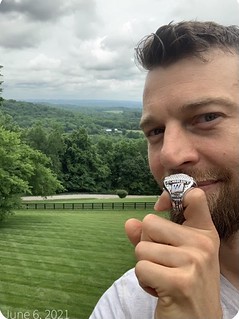 One player said Zobrist's former teammates could buy the ring at auction and then give it back to him. Heritage Auctions told the Kansas City Star the ring's owner was
One player said Zobrist's former teammates could buy the ring at auction and then give it back to him. Heritage Auctions told the Kansas City Star the ring's owner was a collector of championship hardware
and had bought it from Zobrist. But the day after the story went viral in 2021, Zobrist denied he had sold his ring. His representatives sent to the Tribune a time-stamped photo of Zobrist wearing the ring to prove it was still in his possession.
Heritage Auctions attorney Josh Benesh declined to comment on the particulars of the lawsuit or whether the ring in question was real. When the dispute over the title to the ring began last June, it was removed from the auction block and remained in Heritage's possession.
Heritage has a strict policy of assuring that our consigners represent and warrant that they have good title and would never knowingly sell an item that was stolen,
Benesh said. Nor would we ever knowingly sell an item where there was a question to its authenticity.
The auction house appears to be caught in the middle while the consigner and Jostens both claim ownership, a question that will now be decided in court after the two sides couldn't come to an agreement.
Jostens, with the Cubs' permission, had made a sample ring modeled after Zobrist's with distinguishing features
to differentiate it from the actual World Series rings distributed to the players, according to the lawsuit. The suit claims that in February 2018, a Jostens designer left seven sample rings, including the Zobrist sample, with another professional sports organization that was looking at making its own championship rings. At some point the rings were stolen, according to the lawsuit.A police report was filed,
the suit said, but the stolen rings were never recovered.
The suit says Heritage Auctions informed Jostens it would maintain possession until its authenticity and ownership
was resolved, leading to the lawsuit. The suit said Jostens demands a trial by jury on all of its claims and any other matters so triable.
We're grateful that we have been able to work with Heritage to stop the auction of our sample ring,
said Chris Poitras, Jostens general manager of professional and collegiate sports, in a statement. But it's unfortunate that we have had to take legal action to get it back. We are eager to see this ring returned to Jostens.
To read the complete article (subscription required), see:
Jostens files a lawsuit against an auction house over a ‘stolen' duplicate of Ben Zobrist's 2016 World Series ring
(https://www.chicagotribune.com/sports/cubs/ct-chicago-cubs-ben-zobrist-world-series-ring-20220410-cnb4bo2wavf6za7cnidz6plkqy-story.html)
SAVING UKRAINE'S DIGITAL HISTORY
Dennis Tucker forwarded a Washington Post article that bibliophiles and all numismatists should appreciate. Thanks. -Editor
Dennis writes:
"An inspiring report on librarians and volunteers determined to save Ukraine's cultural and historical archives. Makes me think of the Newman Numismatic Portal, the ANA, the ANS, the Smithsonian's National Numismatic Collection, and others who digitize history within the numismatic world."
Buildings, bridges, and monuments aren't the only cultural landmarks vulnerable to war. With the violence well into its second month, the country's digital history — its poems, archives, and pictures — are at risk of being erased as cyberattacks and bombs erode the nation's servers.
Over the past month, a motley group of more than 1,300 librarians, historians, teachers and young children have banded together to save Ukraine's Internet archives, using technology to back up everything from census data to children's poems and Ukrainian basket weaving techniques.
The efforts, dubbed Saving Ukrainian Cultural Heritage Online, have resulted in over 2,500 of the country's museums, libraries, and archives being preserved on servers they've rented, eliminating the risk they'll be lost forever. Now, an all-volunteer effort has become a lifeline for cultural officials in Ukraine, who are working with the group to digitize their collections in the event their facilities get destroyed in the war.
The endeavor, experts said, underscores how volunteers, armed with low-cost technology, training and organization can protect a country's history from disasters such as war, hurricanes, earthquakes and fire.
I have not seen anything like it,
said Winston Tabb, dean of libraries, archives and museums at Johns Hopkins University. We didn't really have the tools before that made it even possible to undertake this kind of initiative.
In little over a month, volunteers have backed up an exhaustive array of data. According to their website and organizers, volunteers have preserved documents totaling 25 terabytes that include the history of Jewish towns in Ukraine, photographs of excavation sites in Crimea, and digitized exhibitions of Kharkiv's Literary Museum.
The article describes a number of open source digital archiving tools used by the volunteers. The Newman Numismatic Portal backs up its own files in multiple locations and also archives hundreds of numismatic websites through the Internet Archive's Wayback Machine. In the hands of knowledgeable users, the tools can dive even deeper into multilayer websites and capture a more complete record of the material.
But precious printed material must first be scanned into digital format, a lengthy process that must take place long before the physical material is threatened by disaster. As a consultant to NNP I'm grateful to all the publishers and organizations who've provided material to the Portal. -Editor
To visit the Newman Numismatic Portal, see:
https://nnp.wustl.edu/
To read the complete article, see:
Meet the 1,300 librarians racing to back up Ukraine's digital archives
(https://www.washingtonpost.com/technology/2022/04/08/ukraine-digital-history/)
LOOSE CHANGE: APRIL 10, 2022
Here are some additional items in the media this week that may be of interest. -Editor
This Smithsonian article discusses new research into early trade networks in the Mediterranean. -Editor
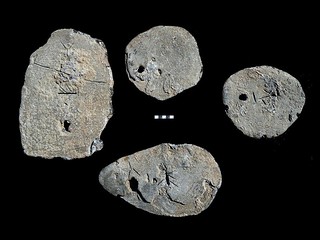 Four 3,200-year-old lead ingots found in a shipwreck off the coast of Israel point to the existence of previously unknown Bronze Age trade links in the Mediterranean Sea, reports Judith Sudilovsky for the Jerusalem Post.
Four 3,200-year-old lead ingots found in a shipwreck off the coast of Israel point to the existence of previously unknown Bronze Age trade links in the Mediterranean Sea, reports Judith Sudilovsky for the Jerusalem Post.
It was a bit of a detective story,
study co-author Naama Yahalom-Mack, an archaeologist at the Hebrew University of Jerusalem, tells the Times of Israel's Amanda Borschel-Dan. We started from the markings and went on to the metal itself to understand where it comes from. First of all what it is, then to see in isotopic analysis that the lead's ‘fingerprint' points us to Sardinia.
Divers discovered the ingots in a shipwreck near the ancient city (and modern town) of Caesarea in the late 1980s. How the metal made its way from Sardinia to Cyprus, which is located more than 1,550 miles away, is unclear. The ingots' existence doesn't have to mean direct trade between the two countries, [but] it might,
writes Ruth Schuster for Haaretz.
During the Bronze Age, Cyprus had access to a steady supply of copper. But it lacked lead and tin, both of which were needed to smelt bronze. The team's analysis suggests that the Cypriots traded copper for lead ore or smelted metal from Sardinia. Once in Cyprus, the lead was stamped with Cypro-Minoan markings—rebranded,
as co-author Assaf Yasur-Landau, an archaeologist at the University of Haifa, describes it to Haaretz—before being shipped further afield to Caesarea and other ports across the Levant.
To read the complete article, see:
Imported Lead Ingots Offer Evidence of Complex Bronze Age Trade Networks
(https://www.smithsonianmag.com/smart-news/bronze-age-metal-trade-extended-for-thousands-of-miles-across-the-mediterranean-180979642/)
This report from India discusses the discovery of early countermarked coins. Found via The Explorator newsletter. To subscribe to Explorator, send a blank email message to: explorator+subscribe@groups.io. -Editor
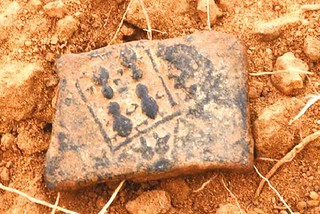 The discovery of two punch marked coins of the Sangam era, with symbols of sea turtle, marked the first of its kind find in the archaeological history of Adichanallur, a historic site located in the lower valley of Tamirabarani in Srivaikuntam taluk, Thoothukudi district.
The discovery of two punch marked coins of the Sangam era, with symbols of sea turtle, marked the first of its kind find in the archaeological history of Adichanallur, a historic site located in the lower valley of Tamirabarani in Srivaikuntam taluk, Thoothukudi district.
Adichanallur was largely known as an ancient burial mound where funerary urns were found.
The site was first excavated by a German archaeologist Dr Jagor in 1876.
Each of the punch marked coins weighed about five grams and with these findings, it would further augment an archaeological survey of prehistoric settlements at Adichanallur. However, the recovered coins were sent to metallurgy experts in Manonmaniam Sundaranar University, Tirunelveli for testing, the ASI Director told DT Next.
To read the complete article, see:
Adichanallur coins find suggests early habitation
(https://www.dtnext.in/News/TamilNadu/2022/04/04050353/1360982/Adichanallur-coins-find-suggests-early-habitation.vpf)
A 2012 London Olympian is selling his silver medal to raise funds for Ukrainian children. -Editor
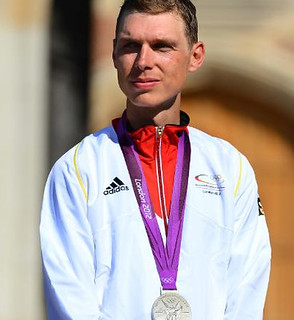 Olympic medalist Tony Martin is auctioning off the silver medal he won at London 2012 to raise funds for children in Ukraine.
Olympic medalist Tony Martin is auctioning off the silver medal he won at London 2012 to raise funds for children in Ukraine.
In an Instagram post Sunday, the German cyclist said it felt wrong "to sit on the couch and accept the situation" after seeing pictures of what has been happening in Ukraine since the start of Russia's invasion.
He said money raised from the auction would go to Wir helfen Kindern -- a foundation that would support the children and their families. "I pay my deepest respect to everybody who helps the people that need to be protected the most: the Ukrainian kids and their families," he wrote. "I also want to do my small part and help."
To read the complete article, see:
Former cyclist Tony Martin to auction off Olympic medal to raise funds for Ukrainian children
(https://www.cnn.com/2022/03/28/sport/tony-martin-cycling-medal-ukraine-spt-intl/index.html)
This Forbes article chronicles how Sotheby's (founded in 1744) embraced the digital age. -Editor
One of the first things Sotheby's needed to do in the age of Zoom was change how it conducted its auctions to avoid the perils of other in-person events. (Like the opera,
Stewart says.) While phone bidders have long been a staple of most sales, the highest-profile auctions had largely viewed the internet as an afterthought,
he says. It would've been like a high school production with a webcam.
When Sotheby's auctions went online in June 2020, their livestreams felt like a cross between Downton Abbey and an energetic CNN broadcast. (With Covid restrictions easing, live audiences are returning.) Sotheby's chief auctioneer, Olly Barker, was fitted with a newscaster's earpiece to ensure the production booth could relay the latest bids to him. The set featured six flat-screens showing rooms in New York, Hong Kong and London fielding bids over the phone, the telecast switching back and forth from Barker and the phone rooms as a news anchor might with reporters in the field. Sotheby's highest-profile auctions now attract close to 2 million views online, up from a few thousand in recent years. Last year, 92% of all bids came via the web, roughly triple the portion from 2018.
NFTs, of course, remain a big part of winning over the next generation of collectors. Sotheby's might have missed out on the Beeple sale in March 2021, but it countered a month later, selling $16.8 million worth of work by the anonymous artist Pak that attracted some 3,000 buyers. Then came record-setting prices for two of the most popular cartoon NFTs: $11.8 million for a single CryptoPunk (a rare alien) in June 2021 and $3.4 million for a Bored Ape (a golden-fleeced primate) that October.
To read the complete article, see:
How Sotheby's Combined NFTs And A Netflix Attitude In A Wild Bid To Be Crypto Cool
(https://www.forbes.com/sites/abrambrown/2022/04/09/how-sothebys-combined-nfts-and-a-netflix-attitude-in-a-wild-bid-to-be-crypto-cool/)
Once in a while, you come across a detail that shows how much the world has changed. The most creative science fiction writer would have had a hard time coming up with it just a few years back.
Today's example comes from the website of the European Union Intellectual Property Office.
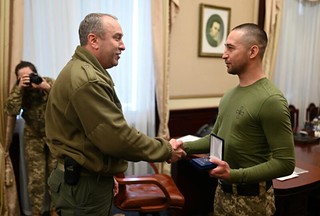 It's a trademark application for the phrase:
It's a trademark application for the phrase: RUSSIAN WARSHIP, GO F**K YOURSELF
.
It's not an opportunistic intellectual property squatter or an entrepreneurial company or even the Ukrainian government applying.
Instead, it's literally the border guard himself: Roman Hrybov, 32, who was feared dead, but who was later found to have been captured by Russians after they seized the island.
The trademark application contemplates things like ...
... Collectible coins. You read it here first. -Editor
To read the complete article, see:
Toys, games, and playthings
(https://www.understandably.com/p/toys-games-and-playthings)
To read the earlier E-Sylum article, see:
UKRAINE AWARDS MEDAL TO SALTY-TONGUED SAILOR
(https://www.coinbooks.org/v25/esylum_v25n14a27.html)

